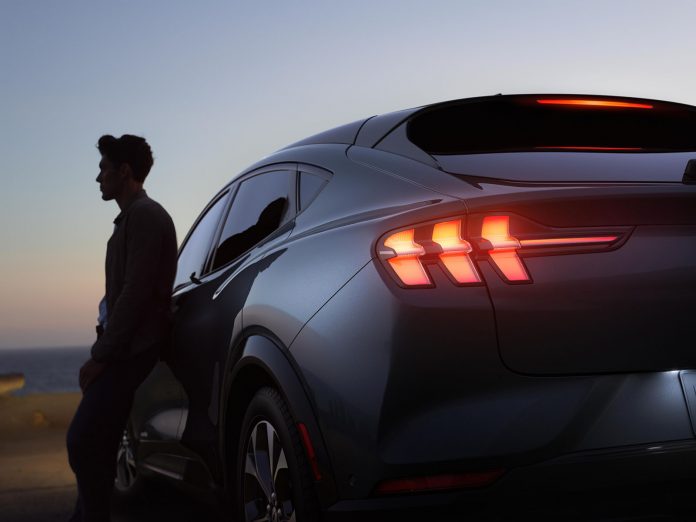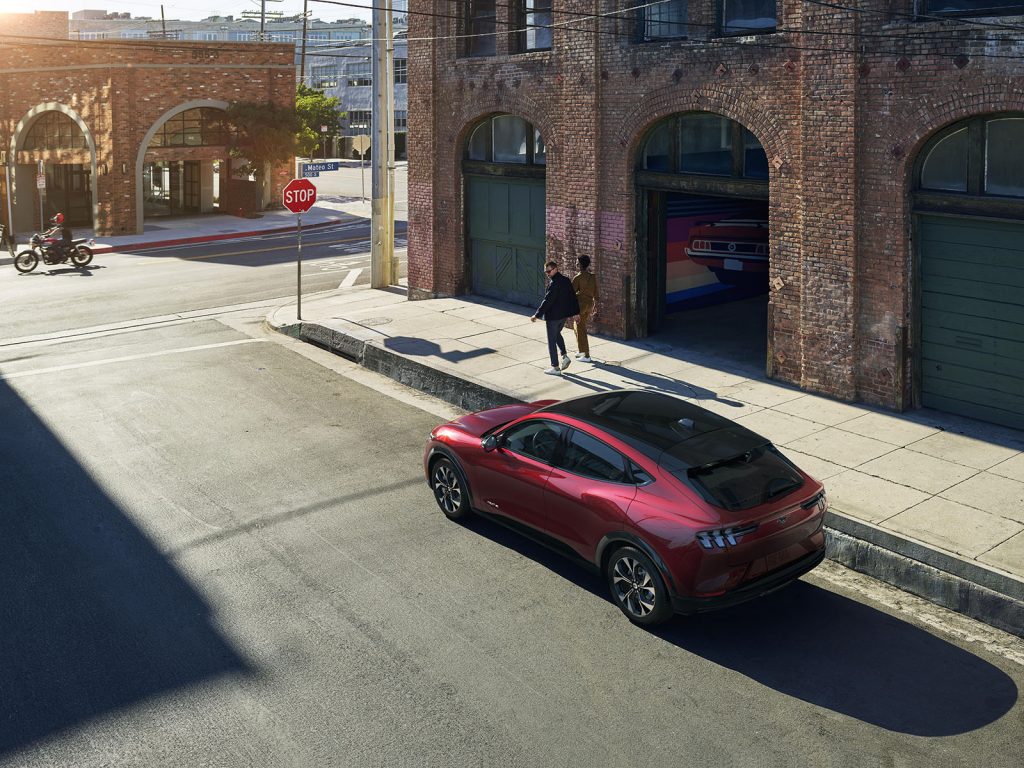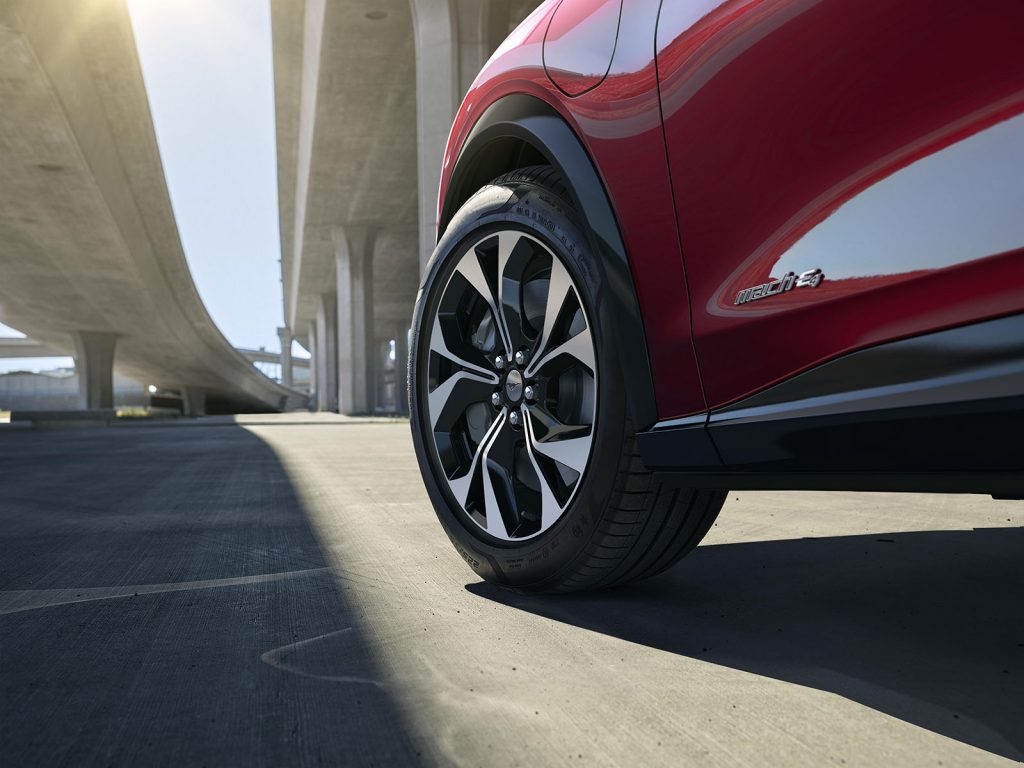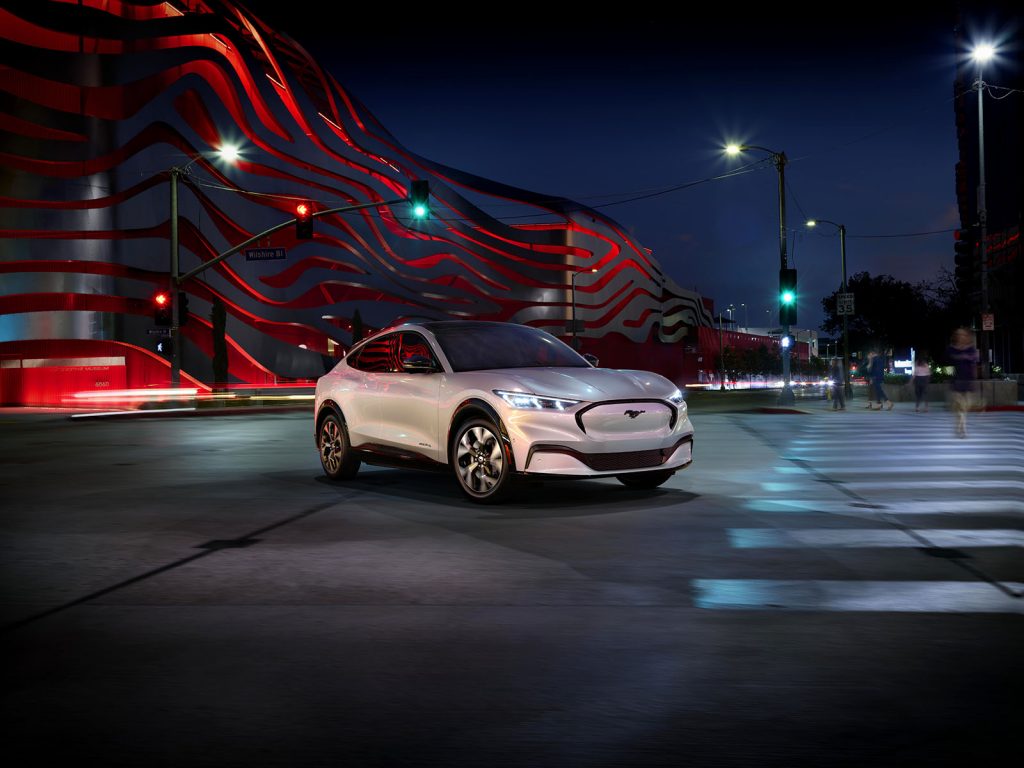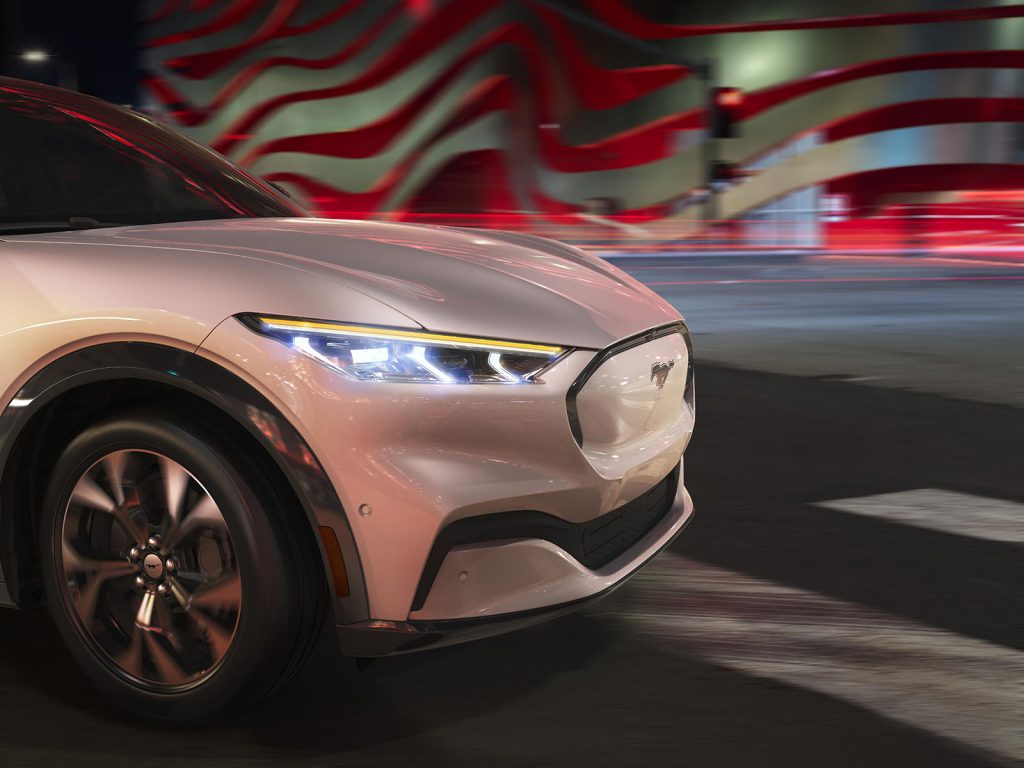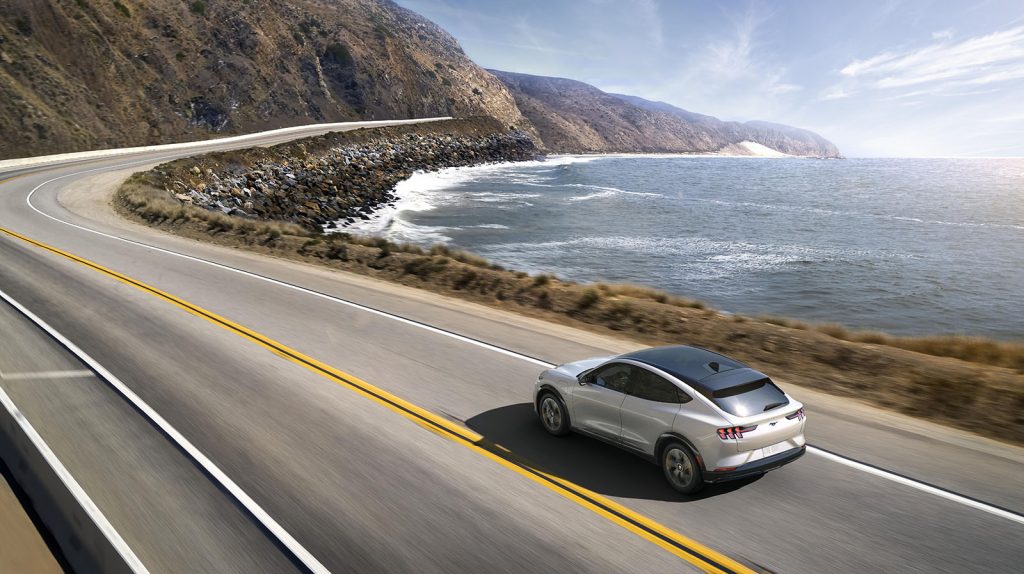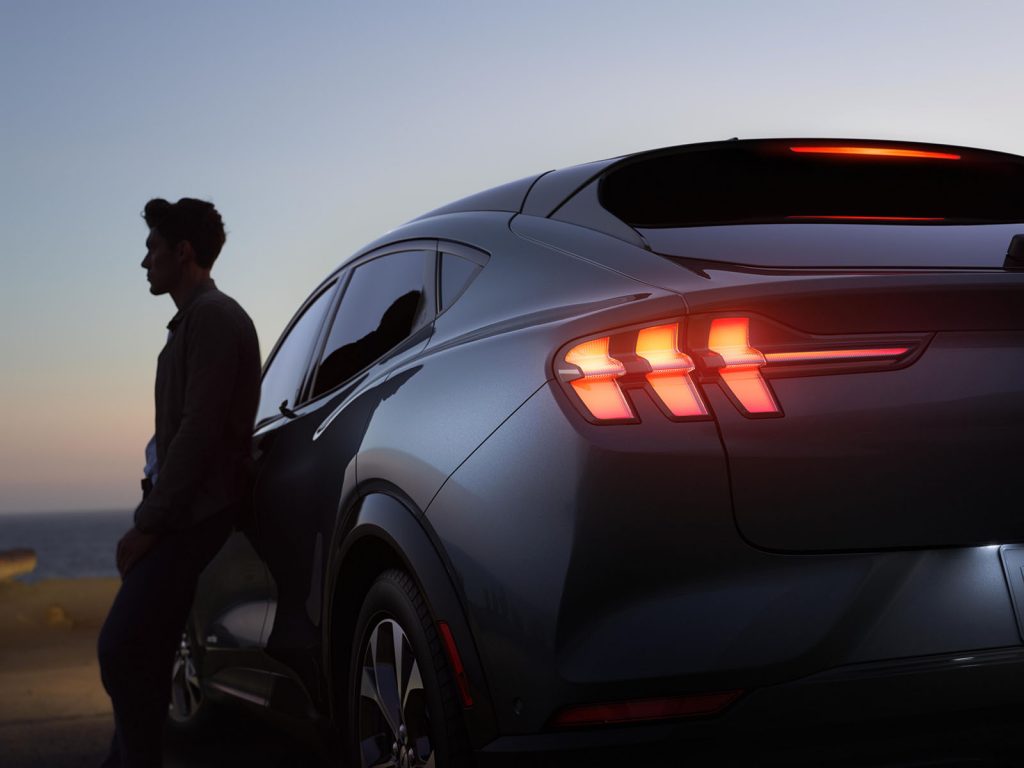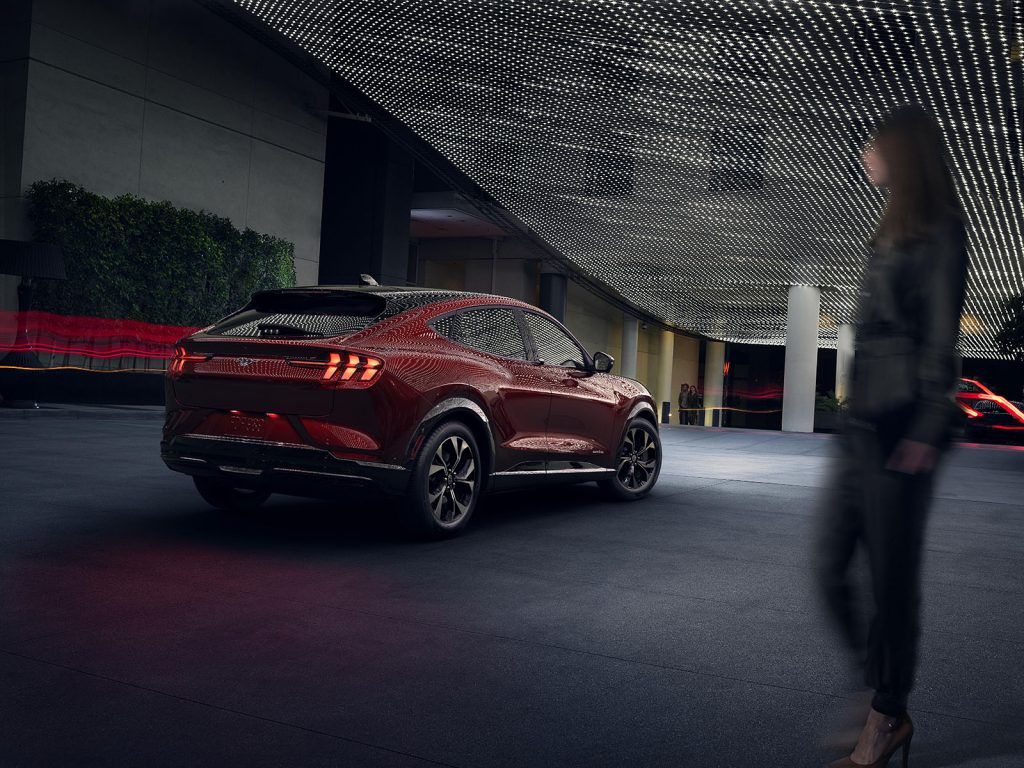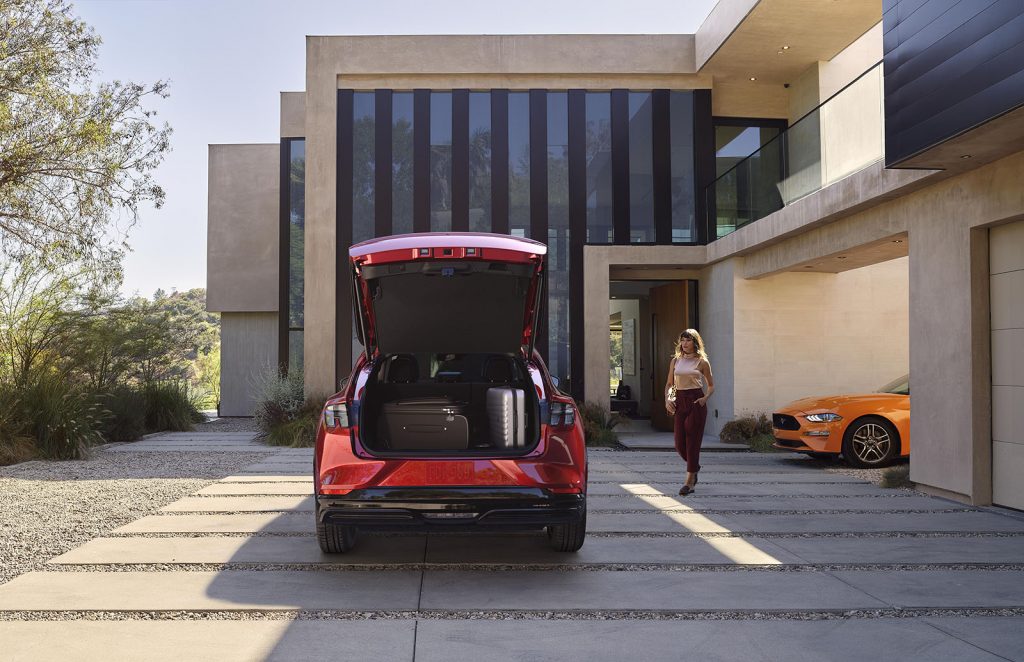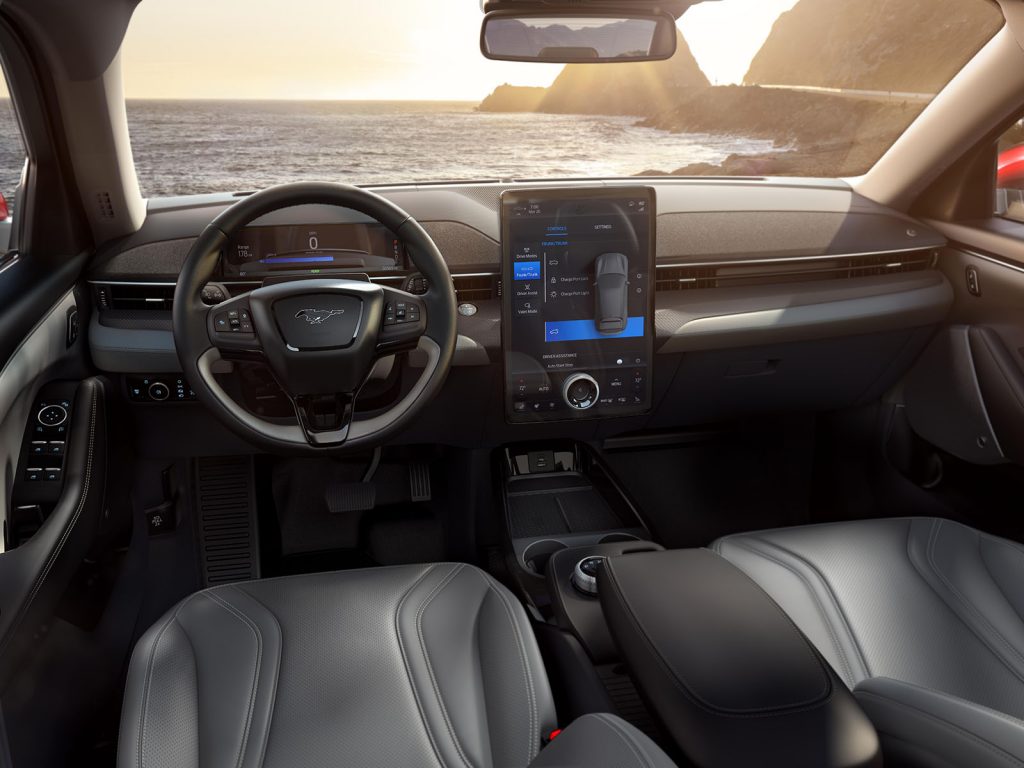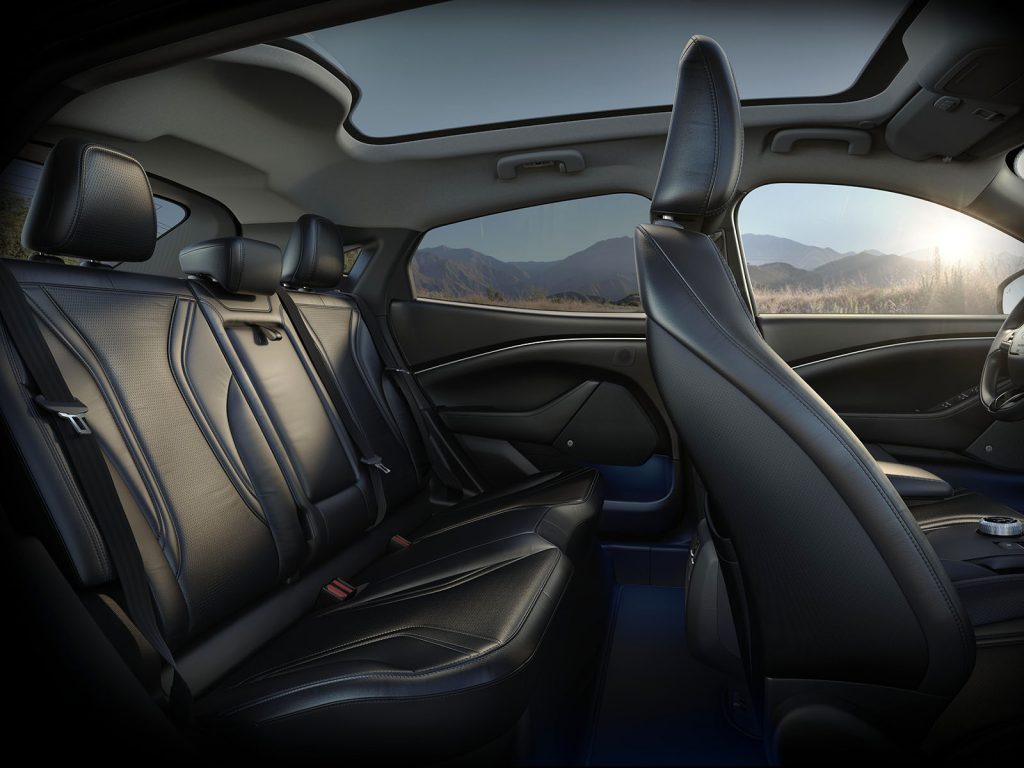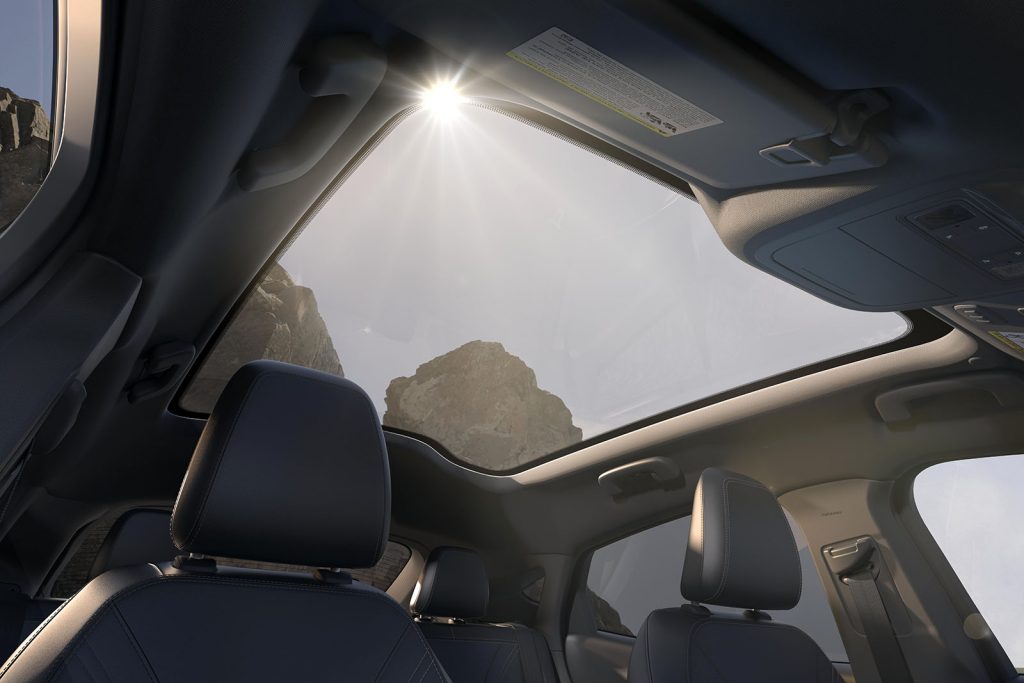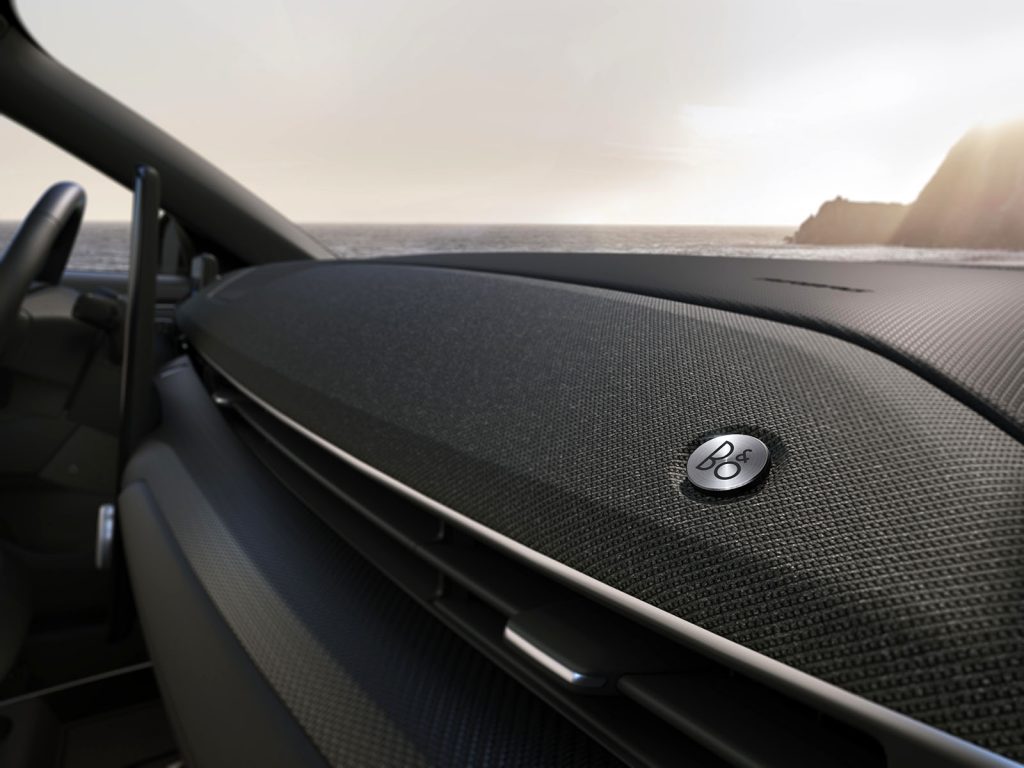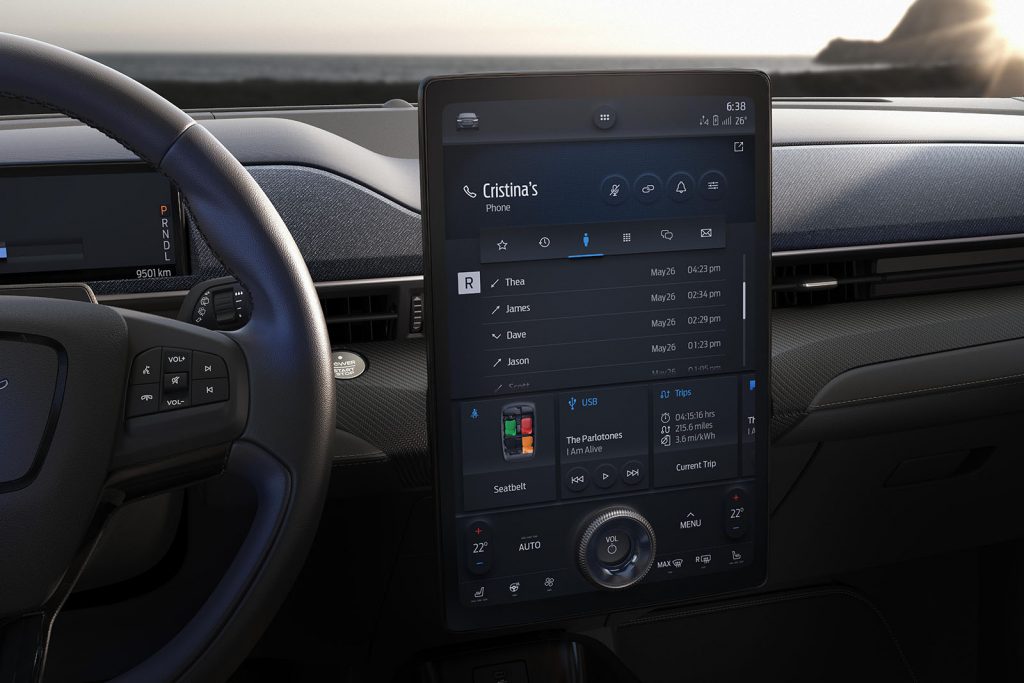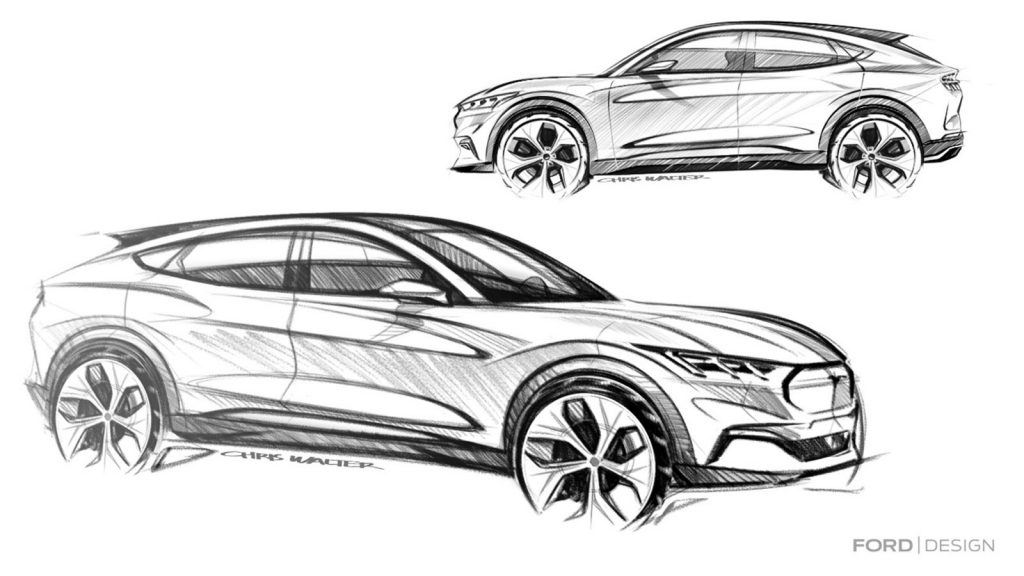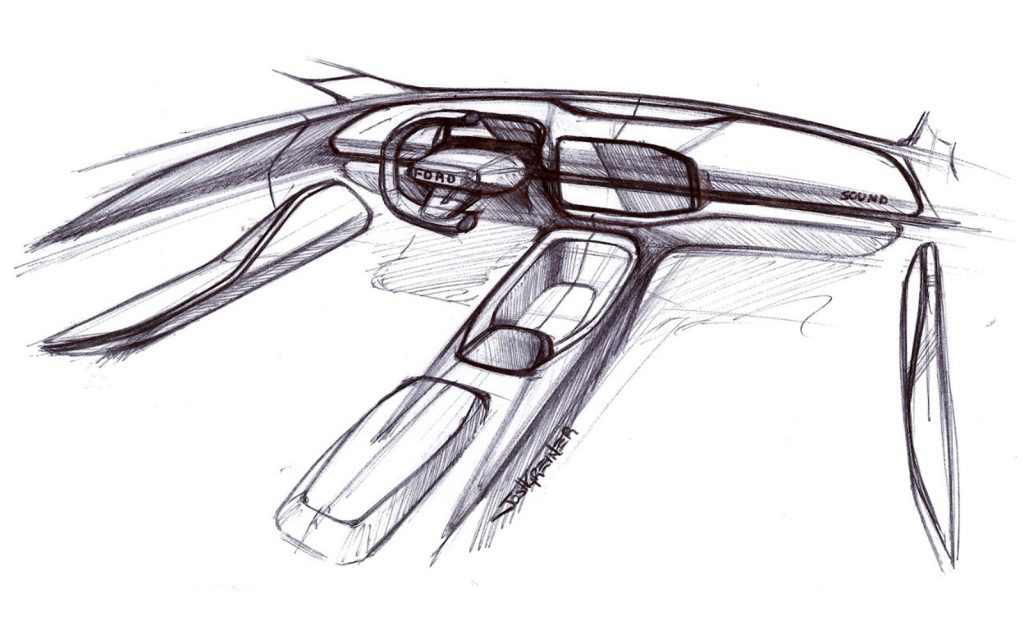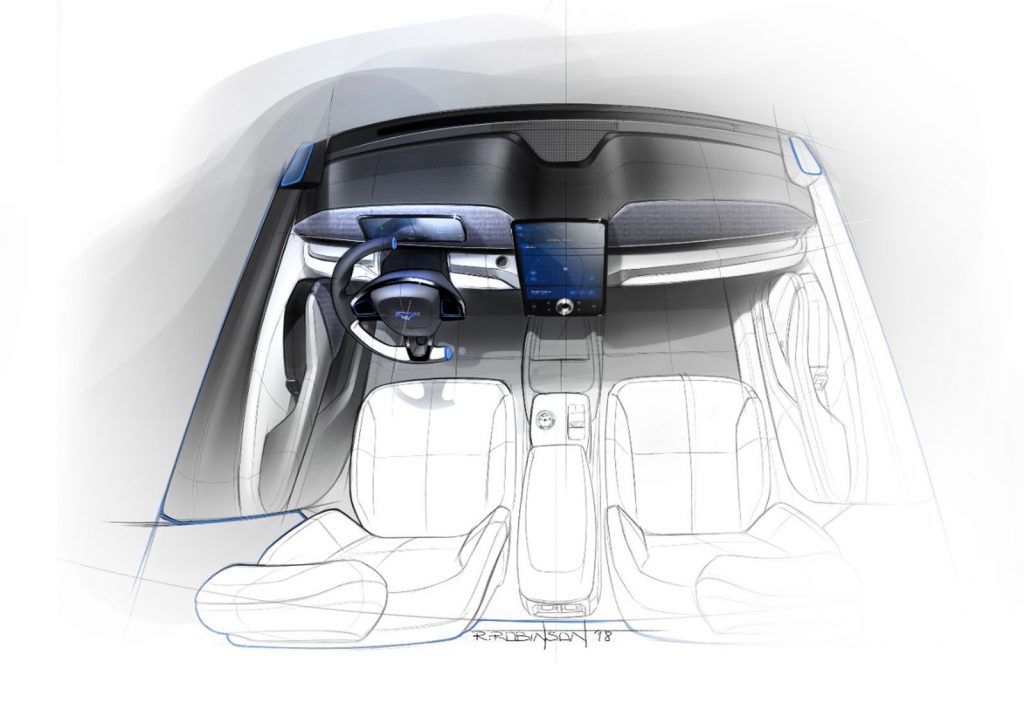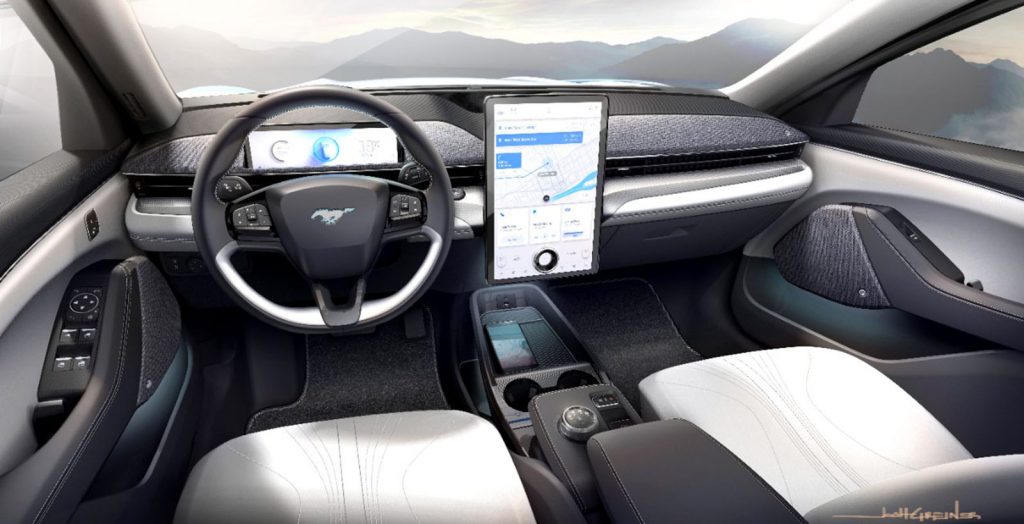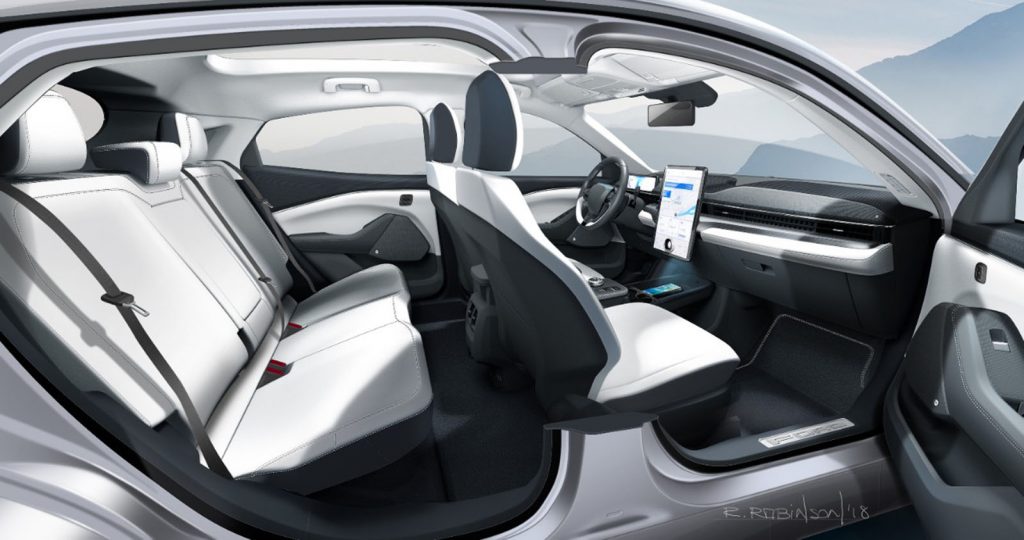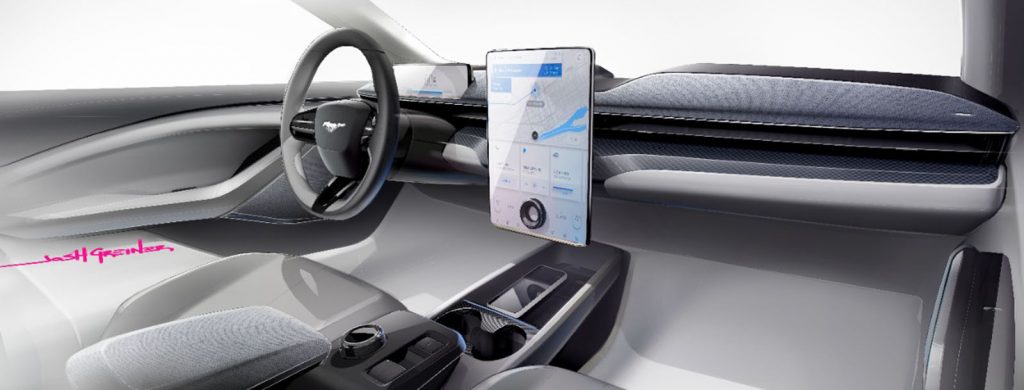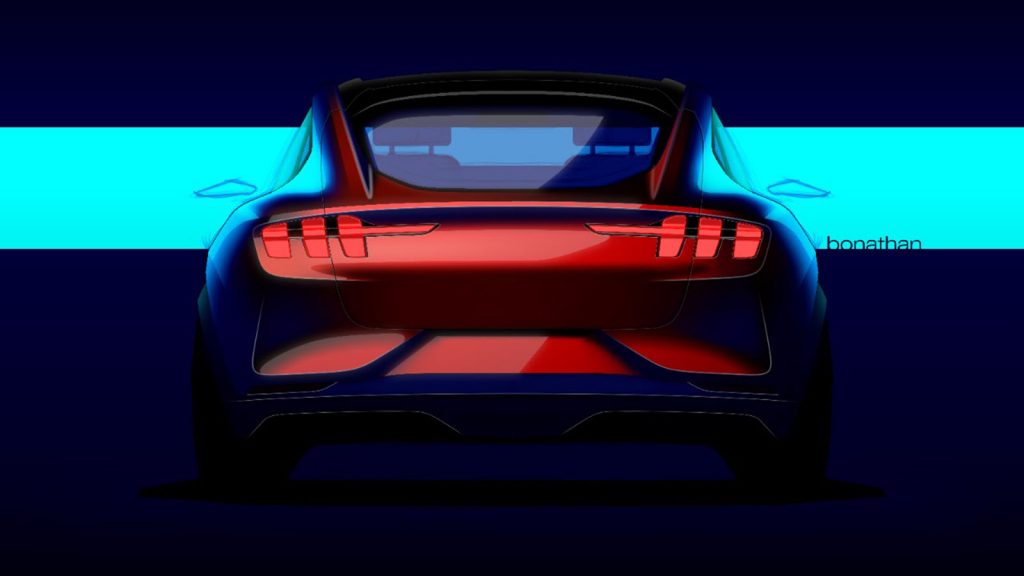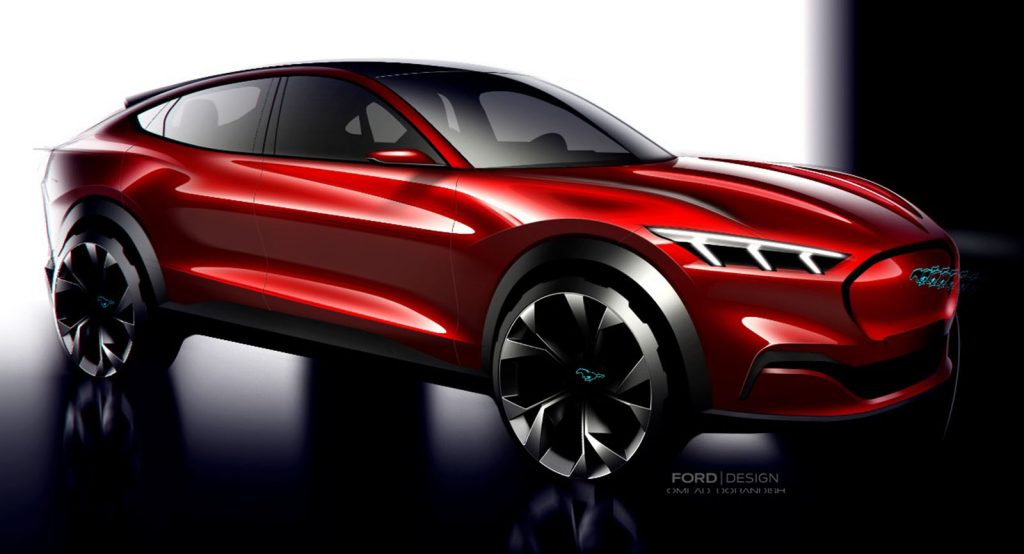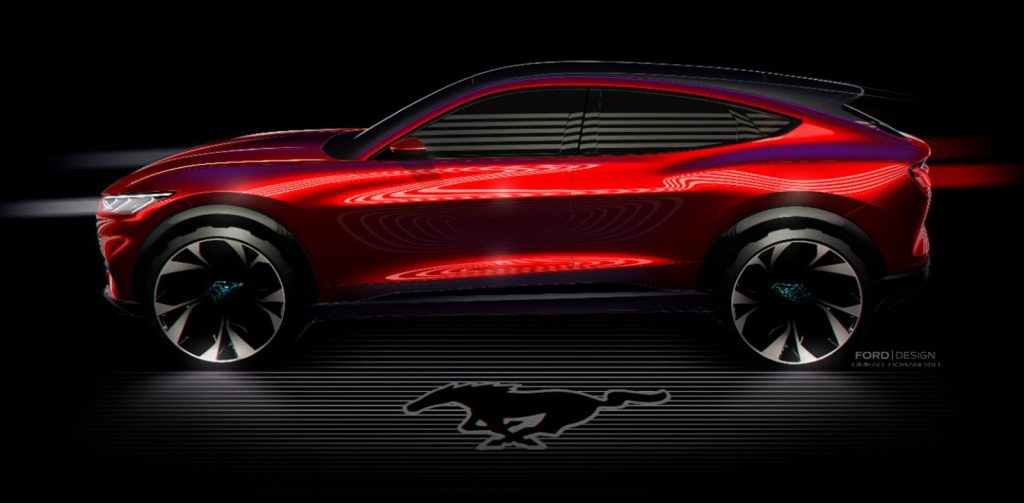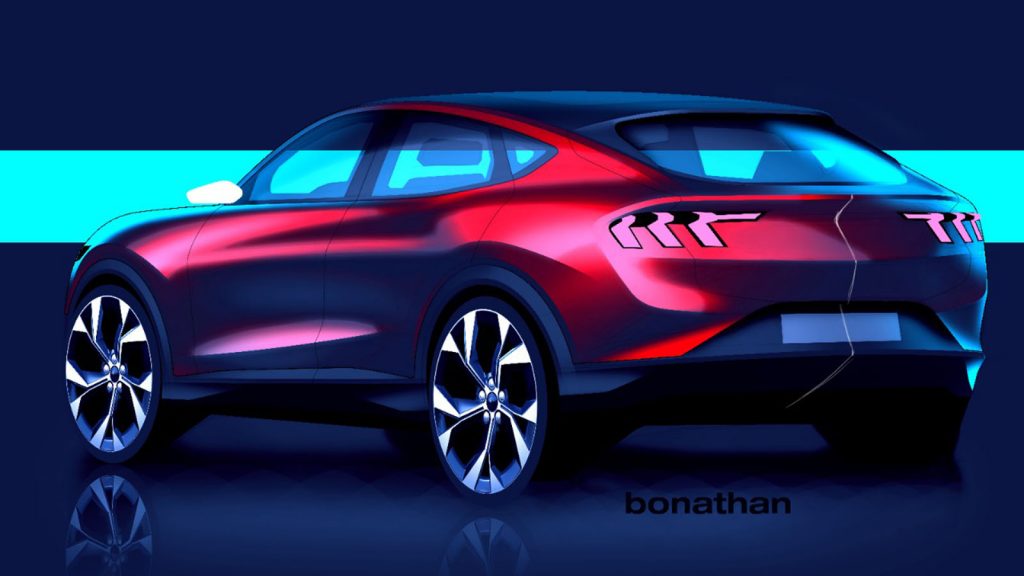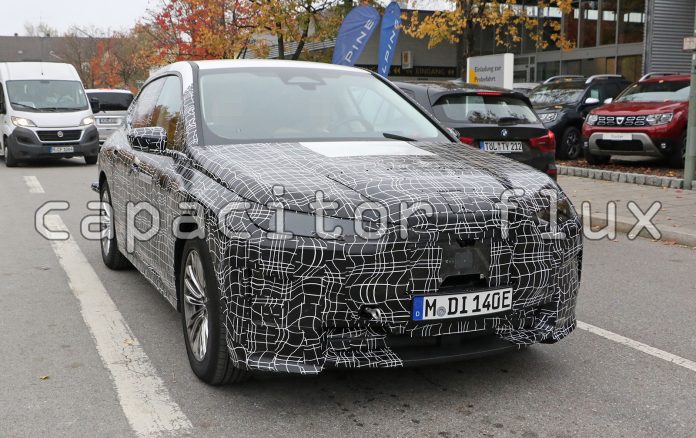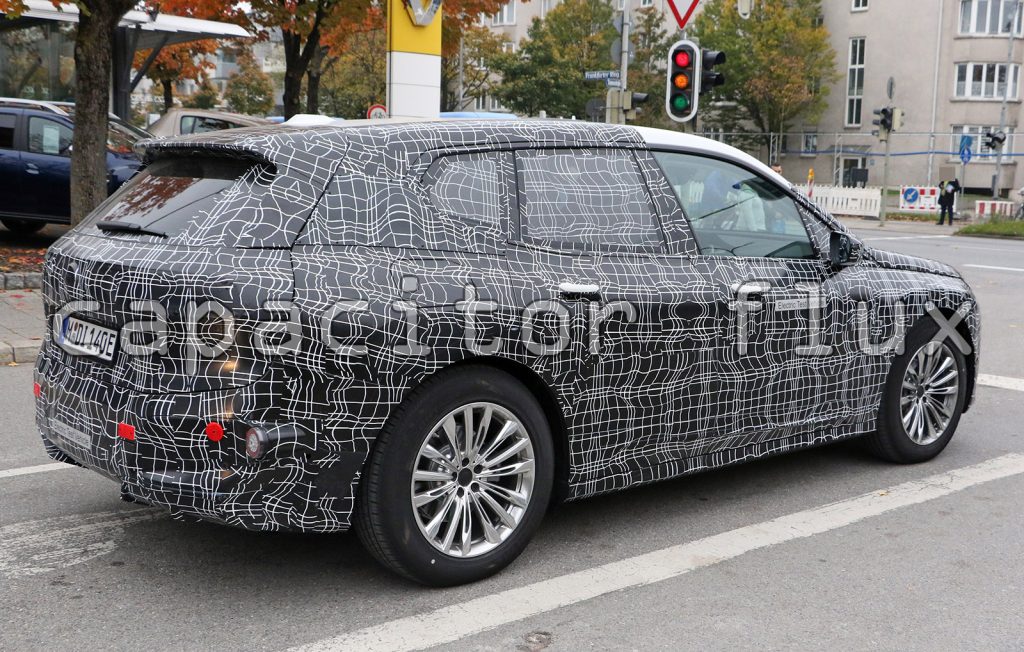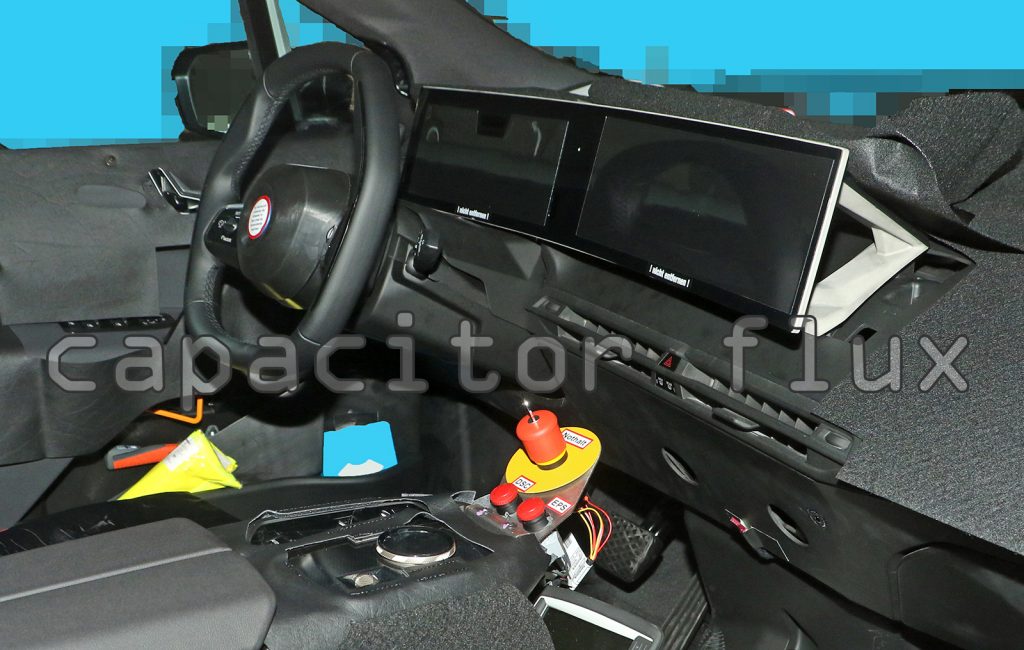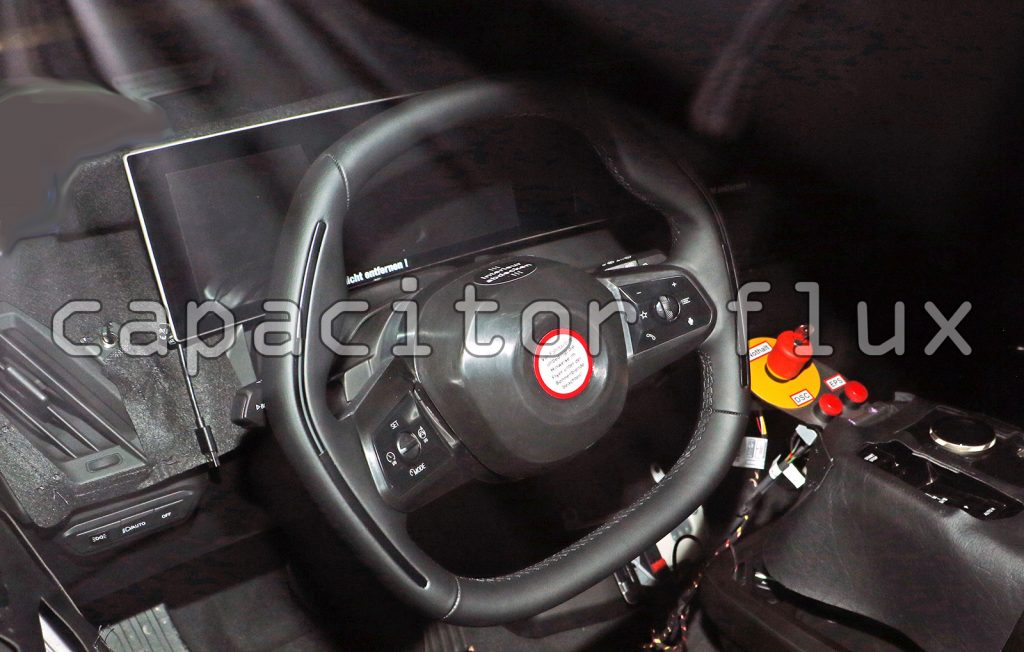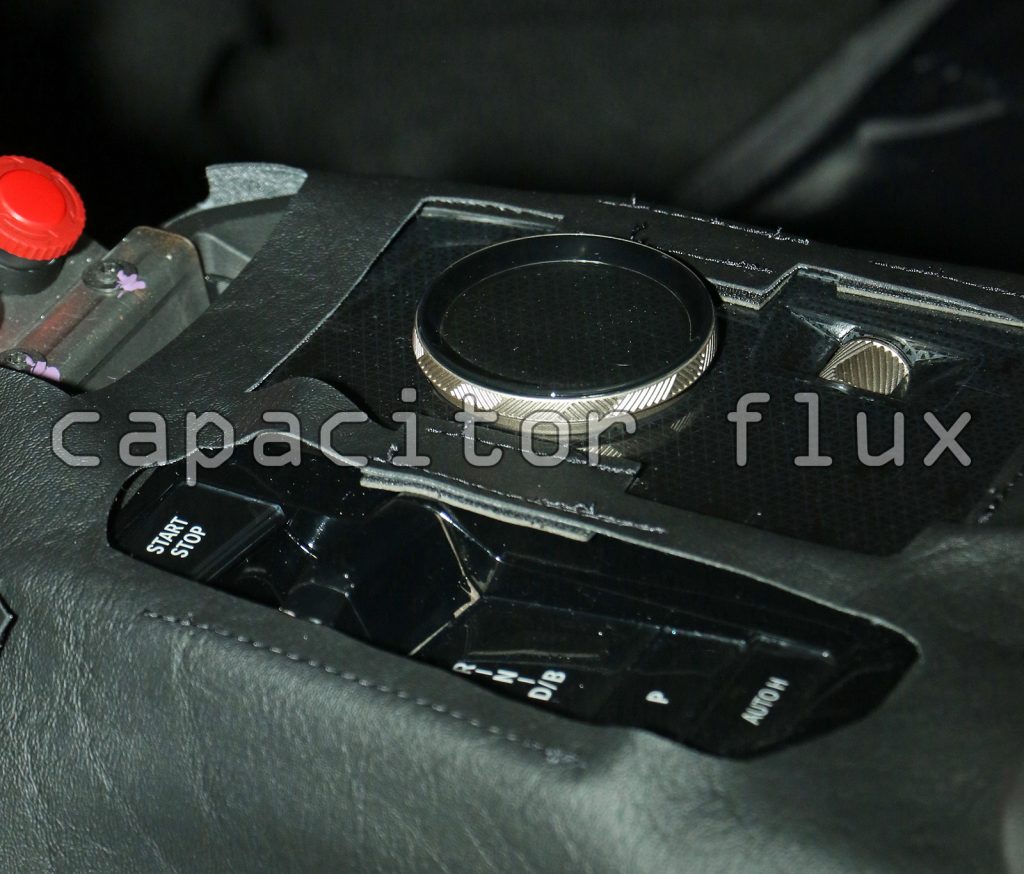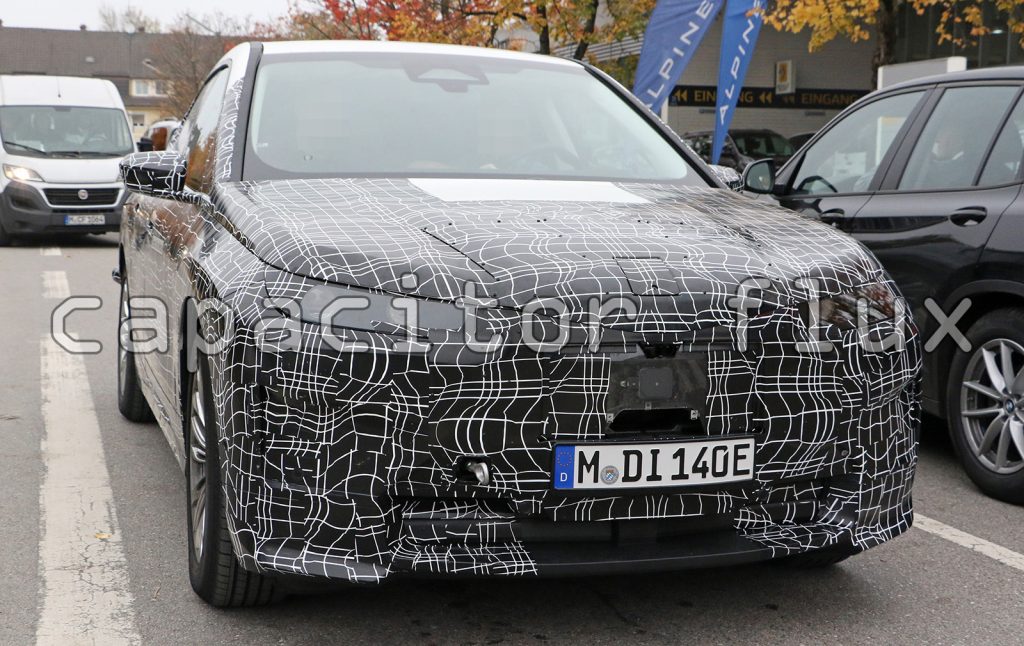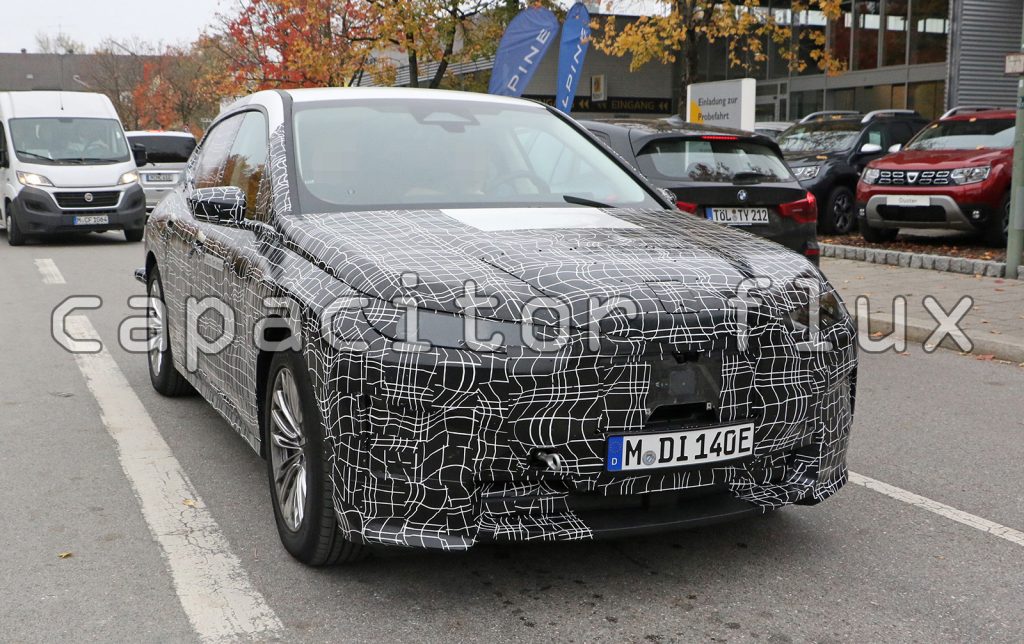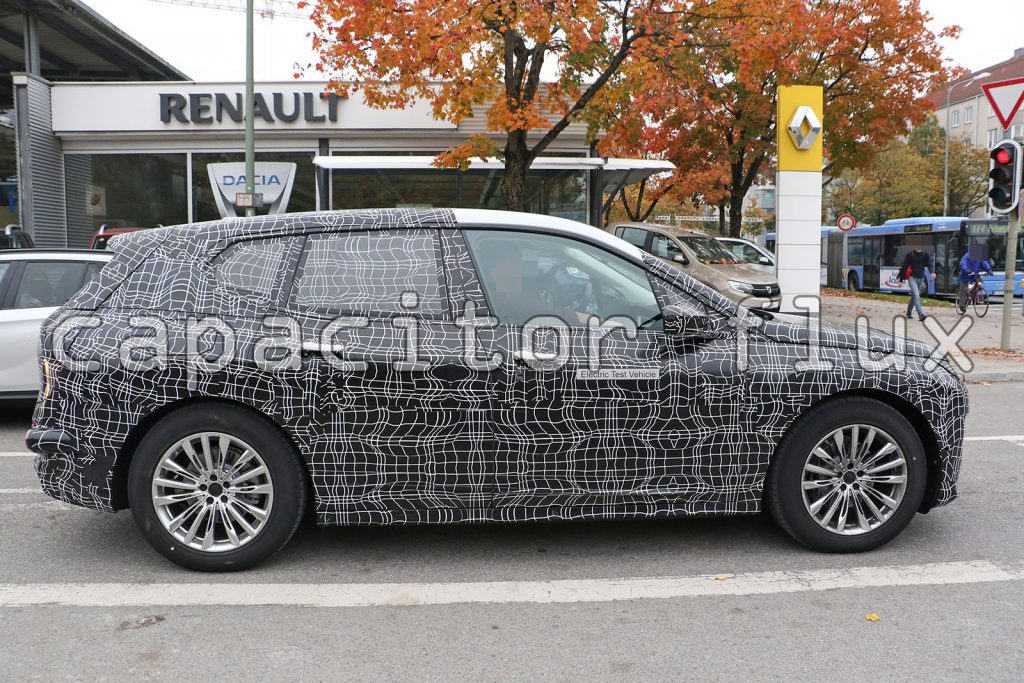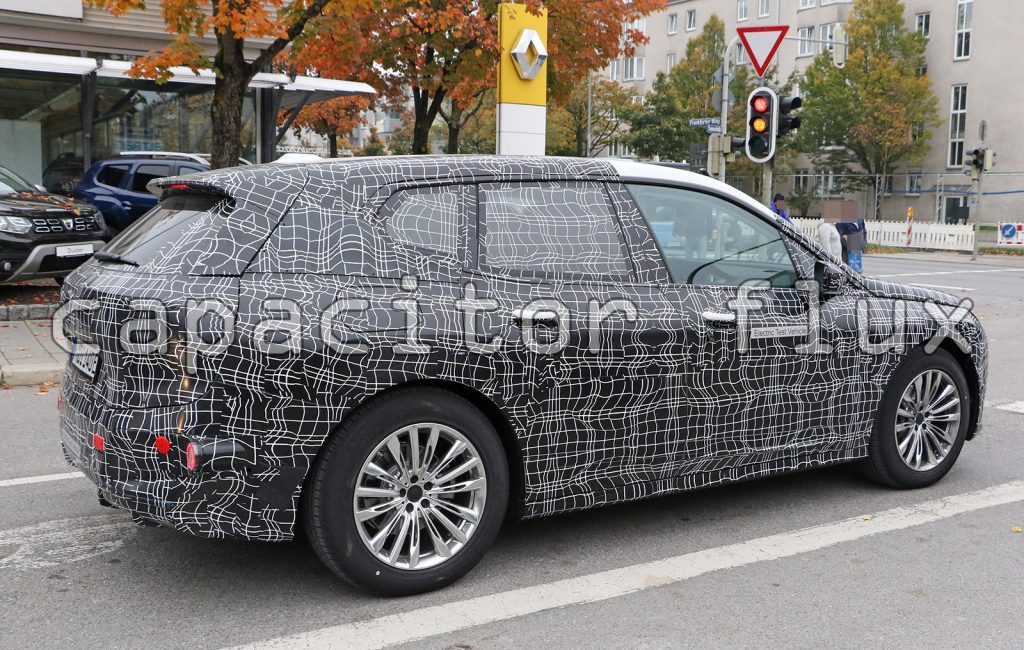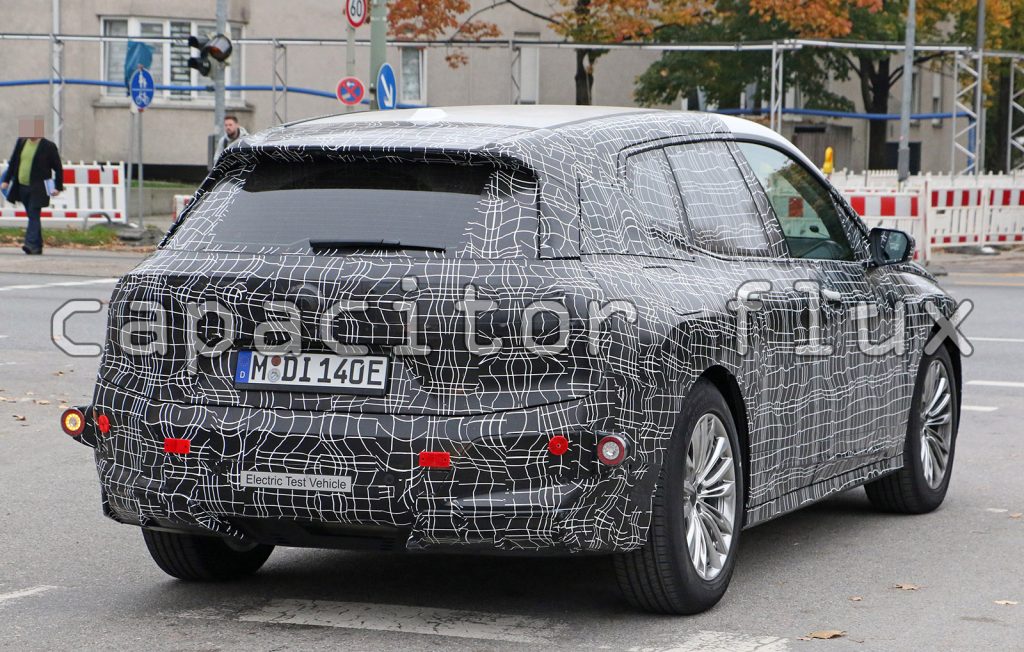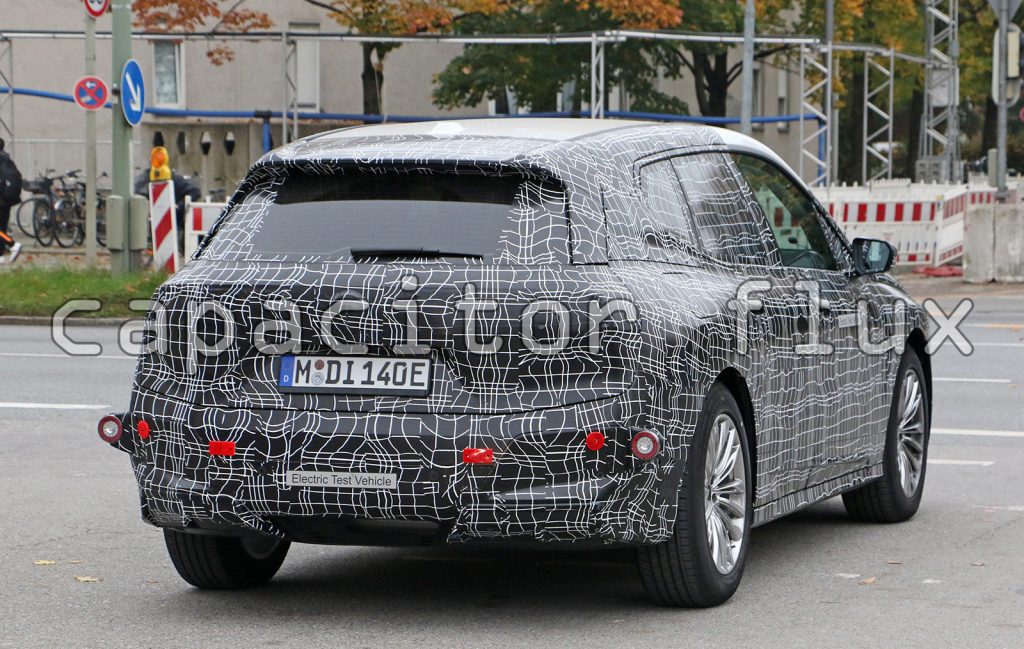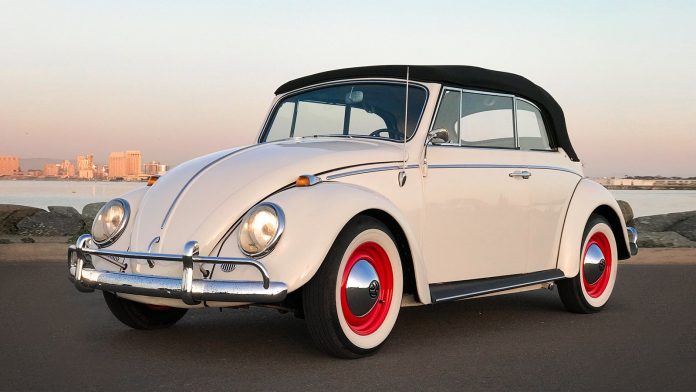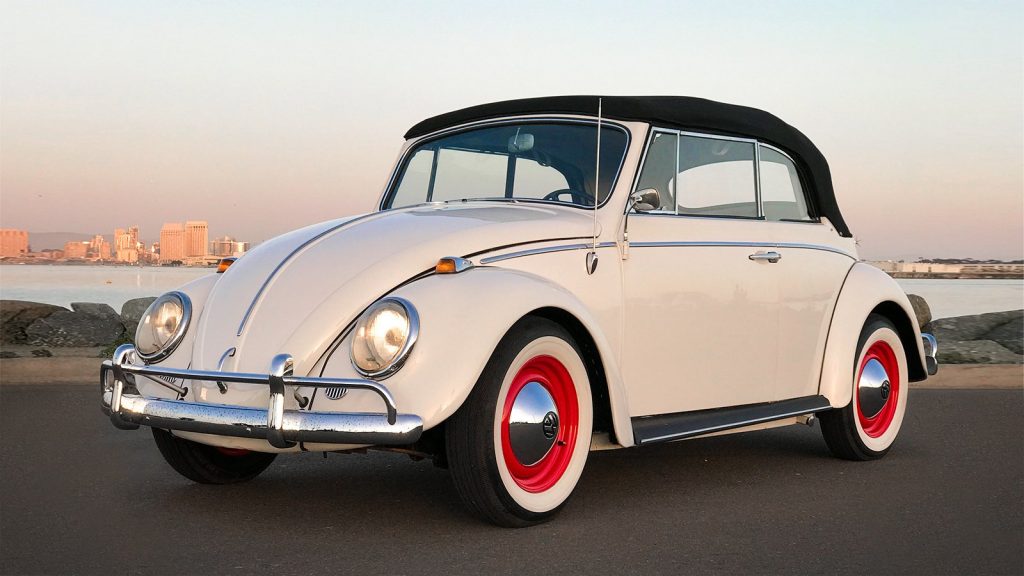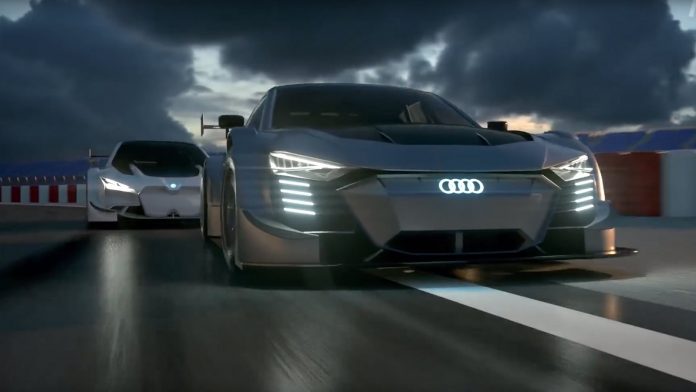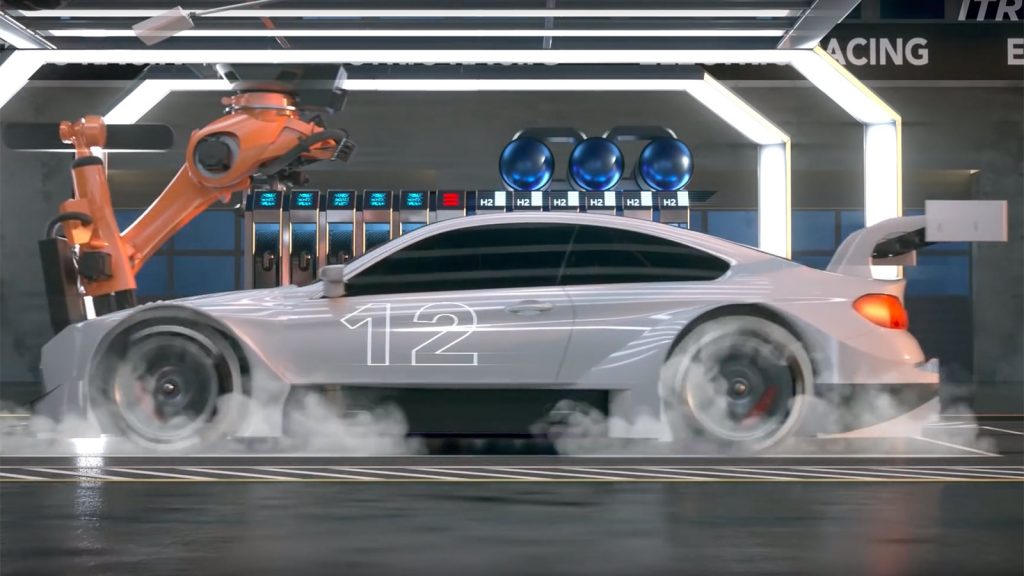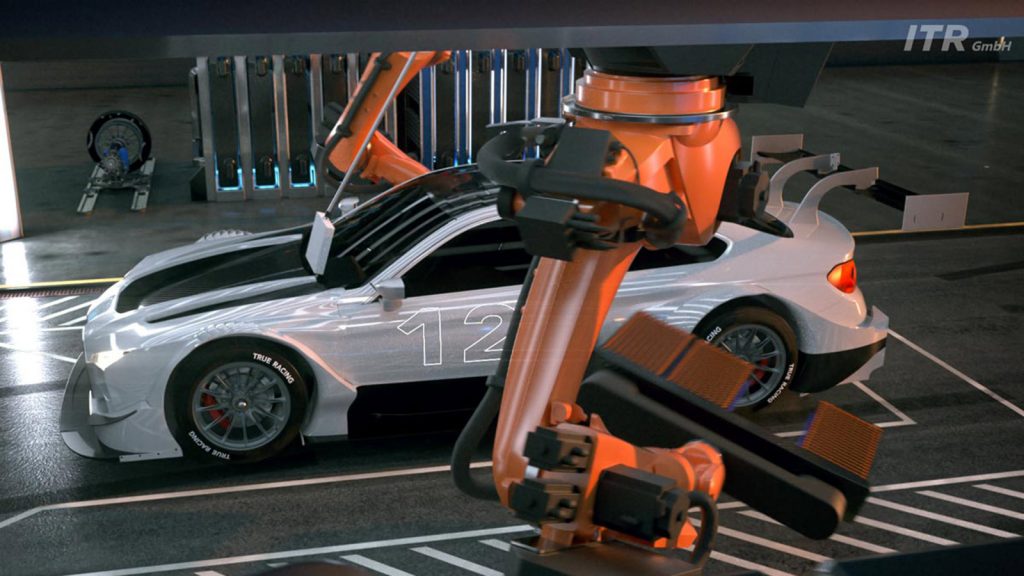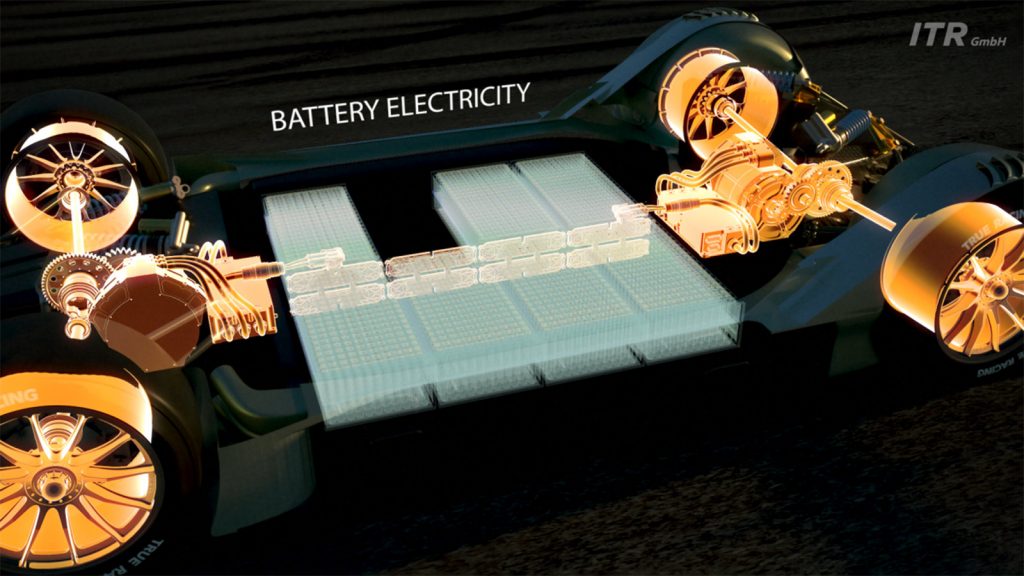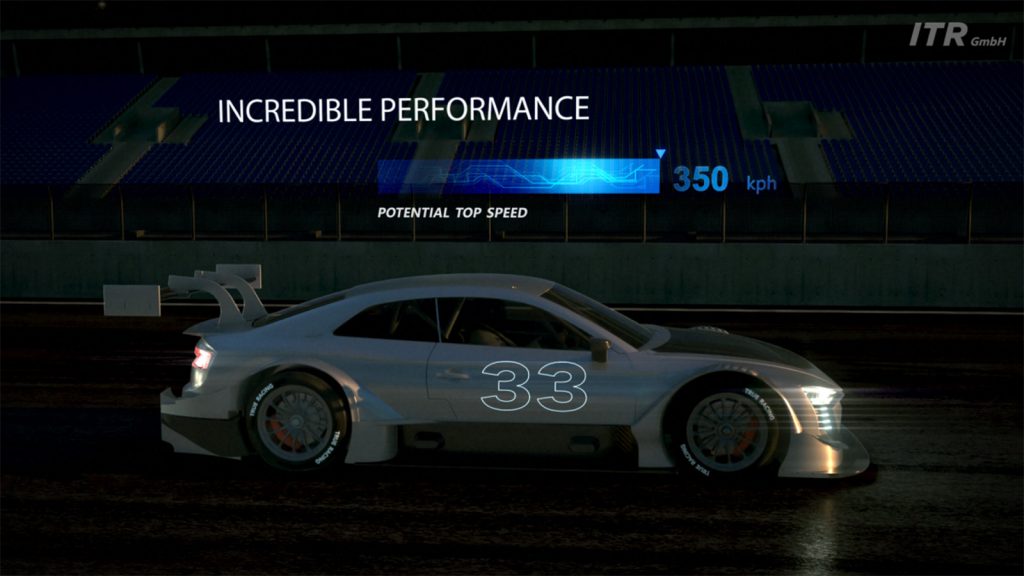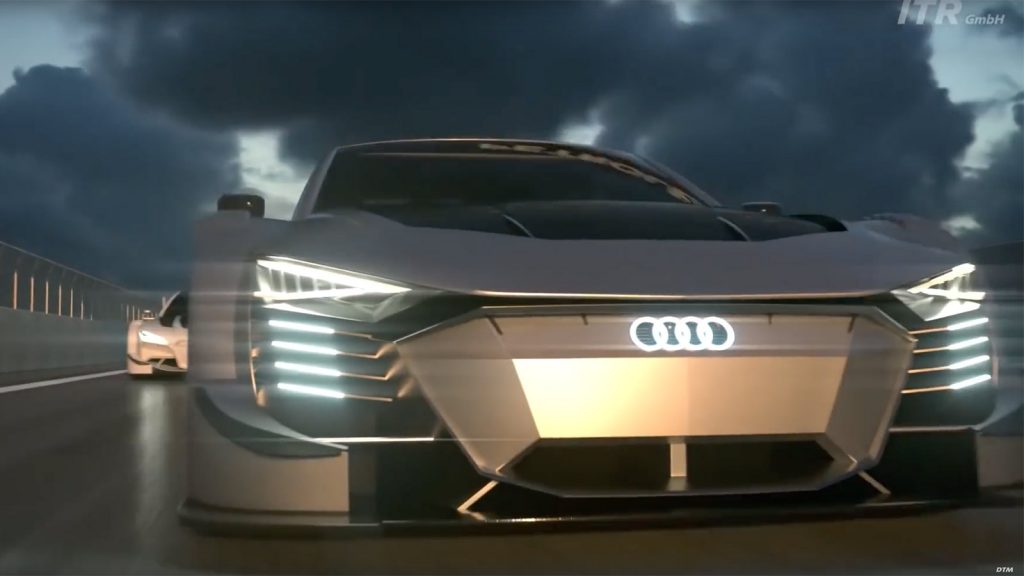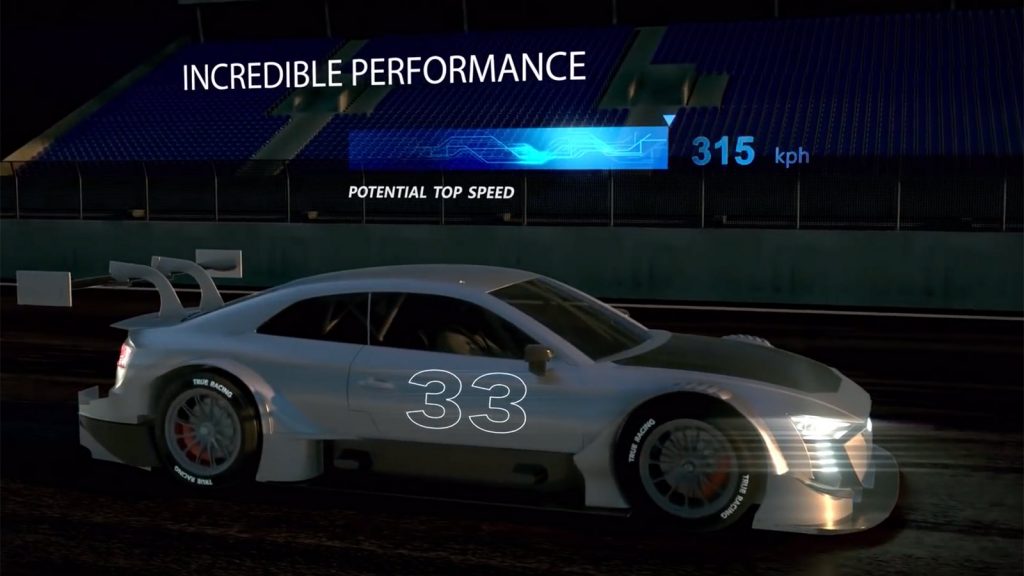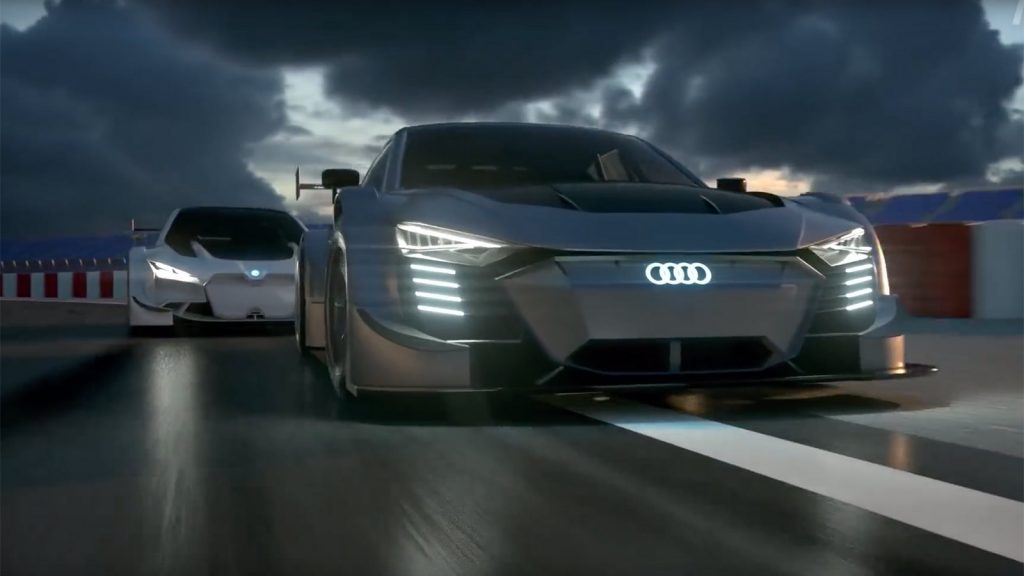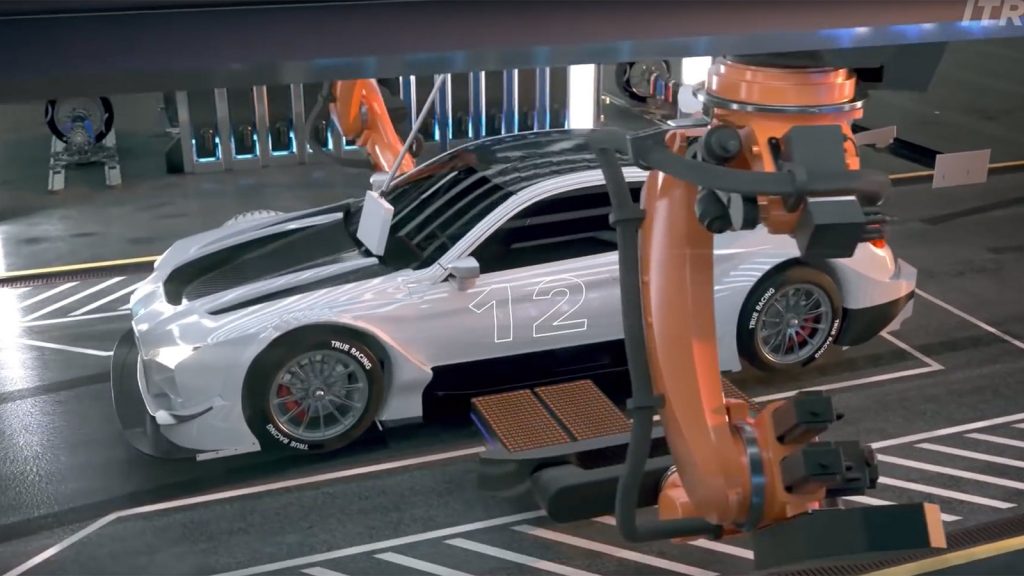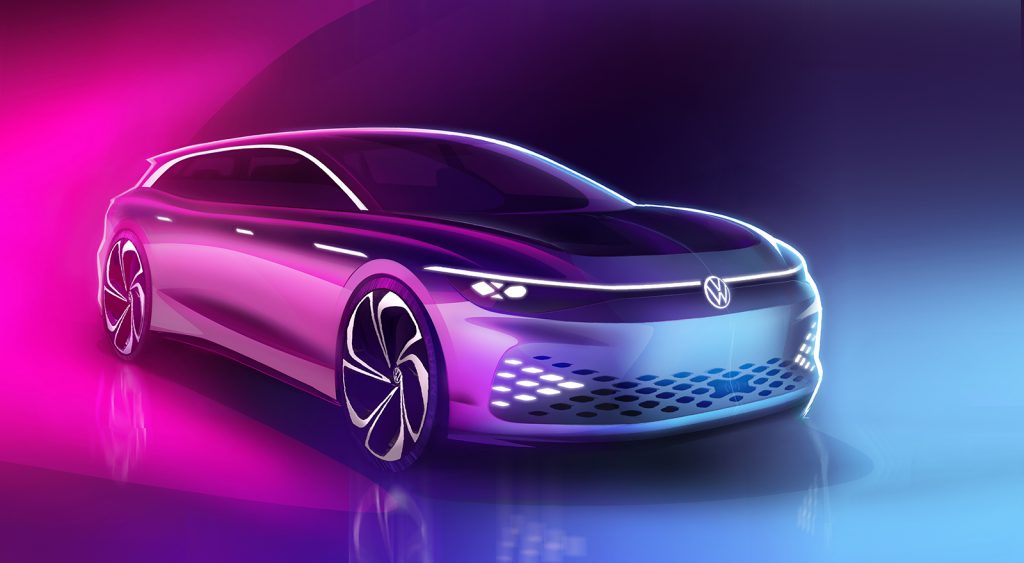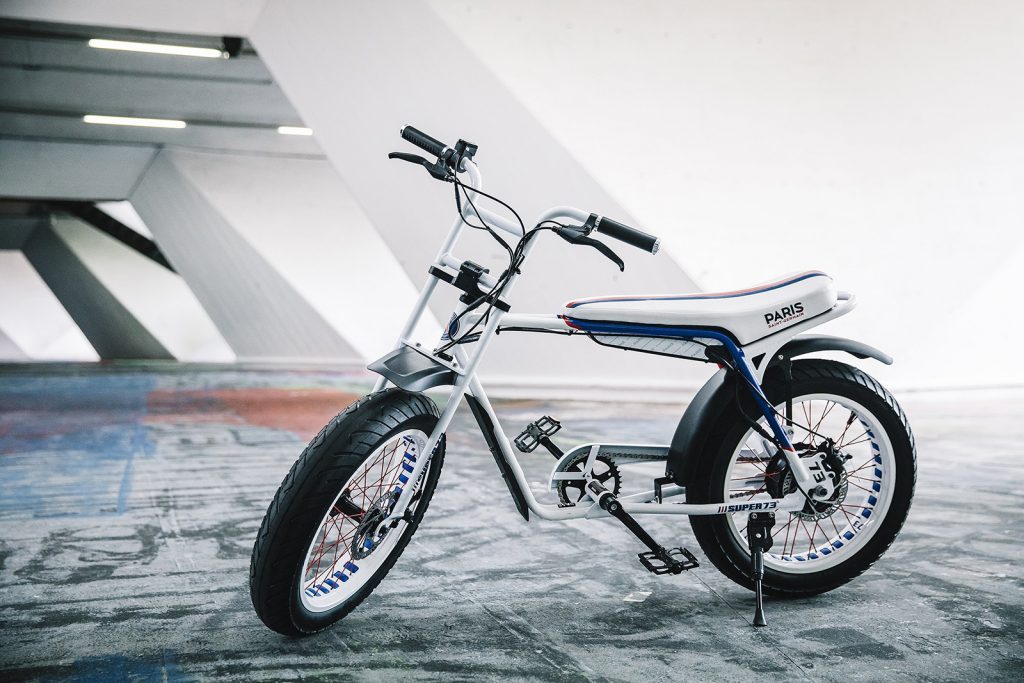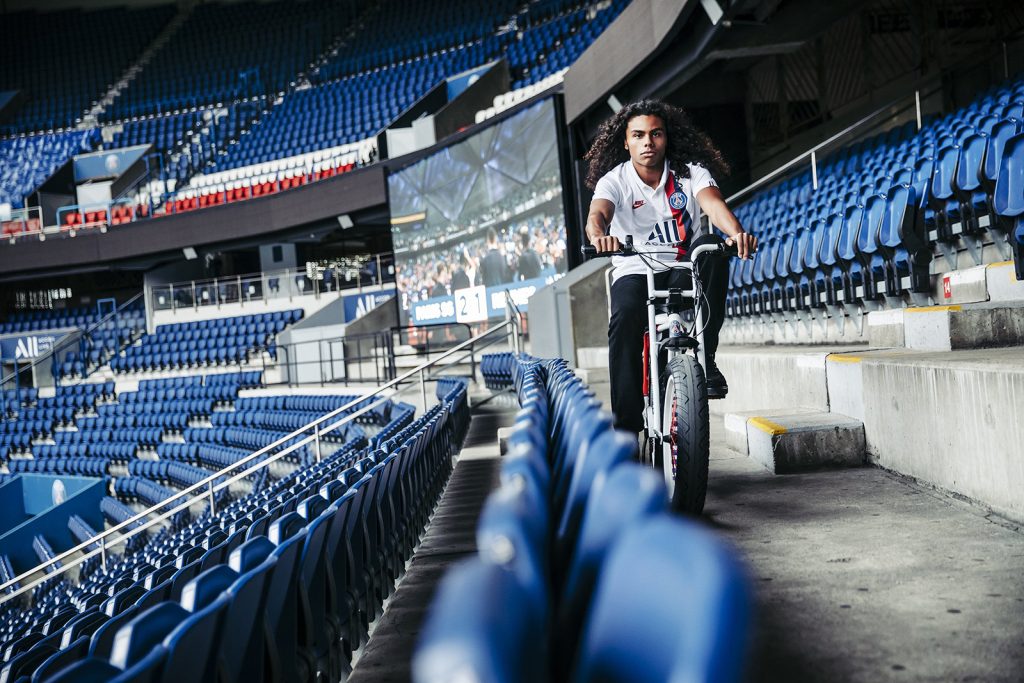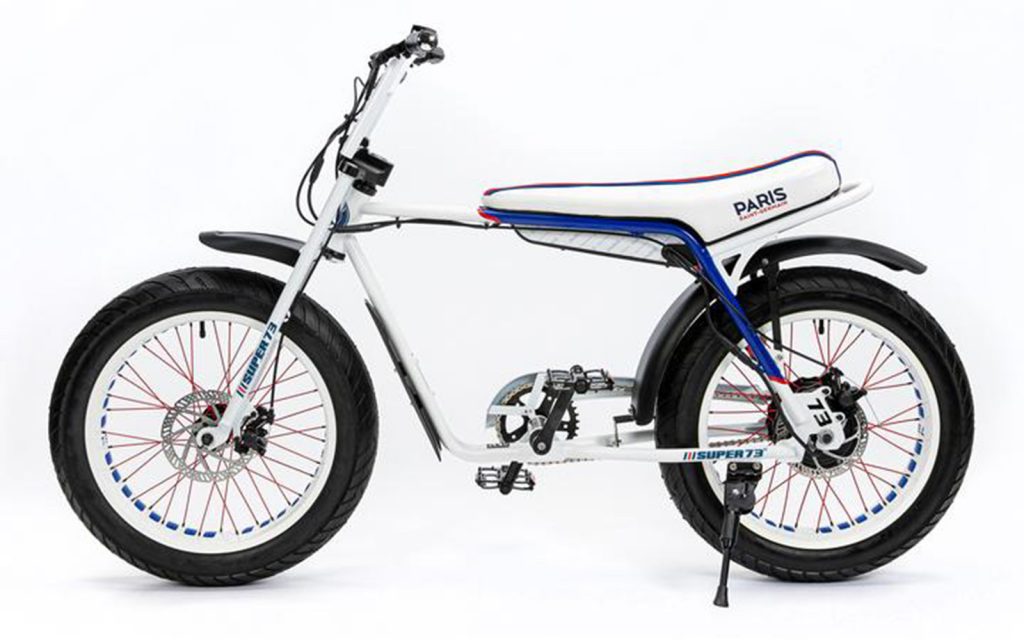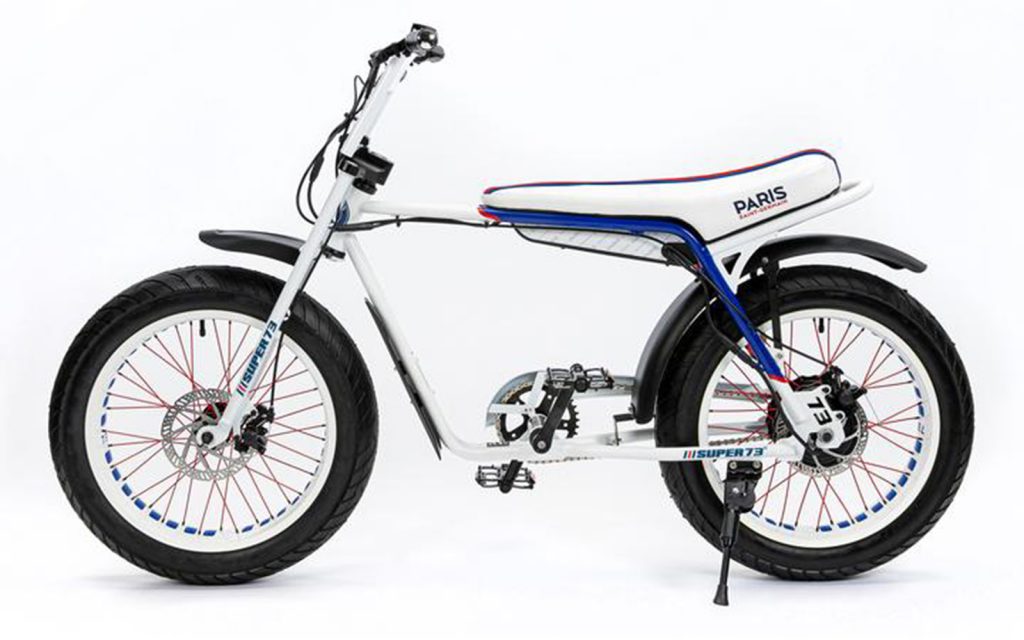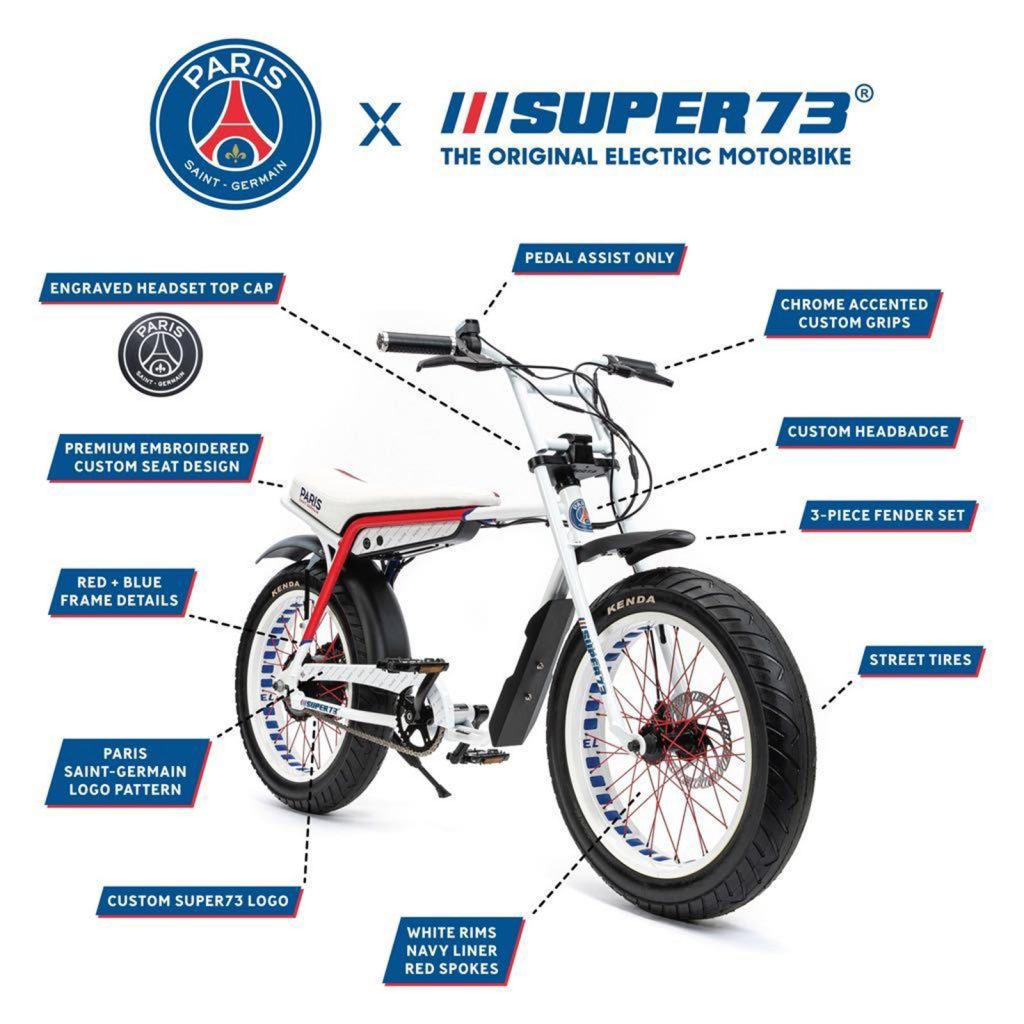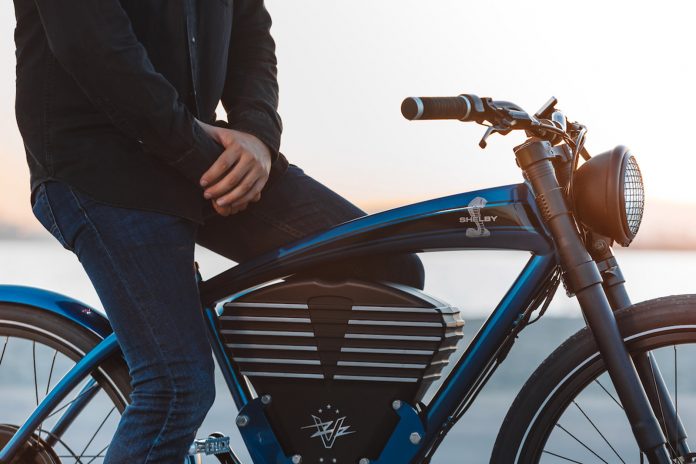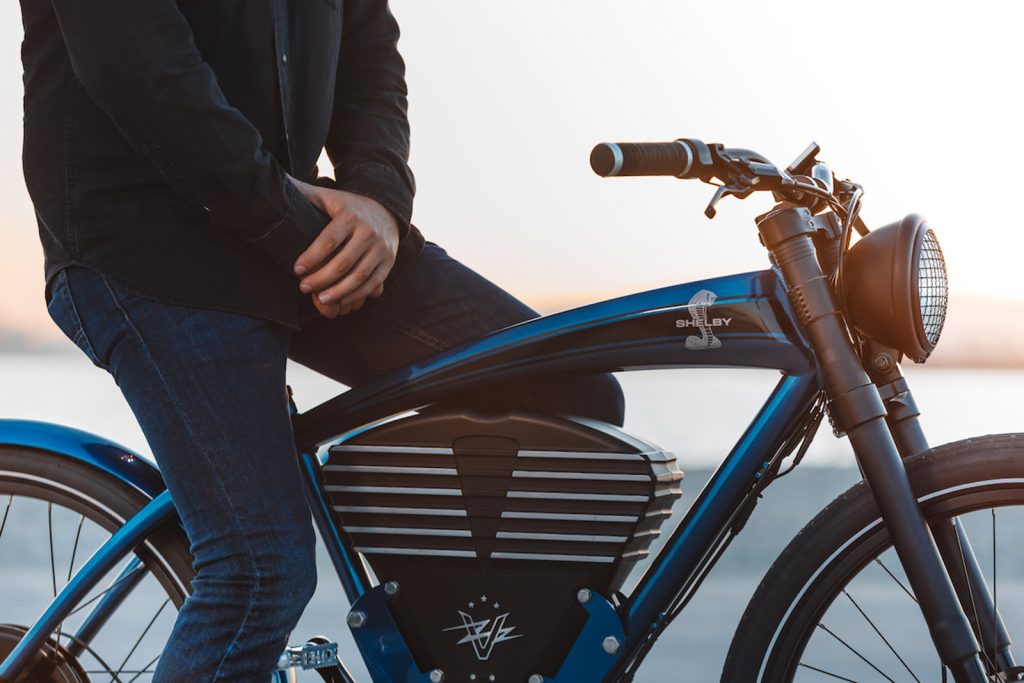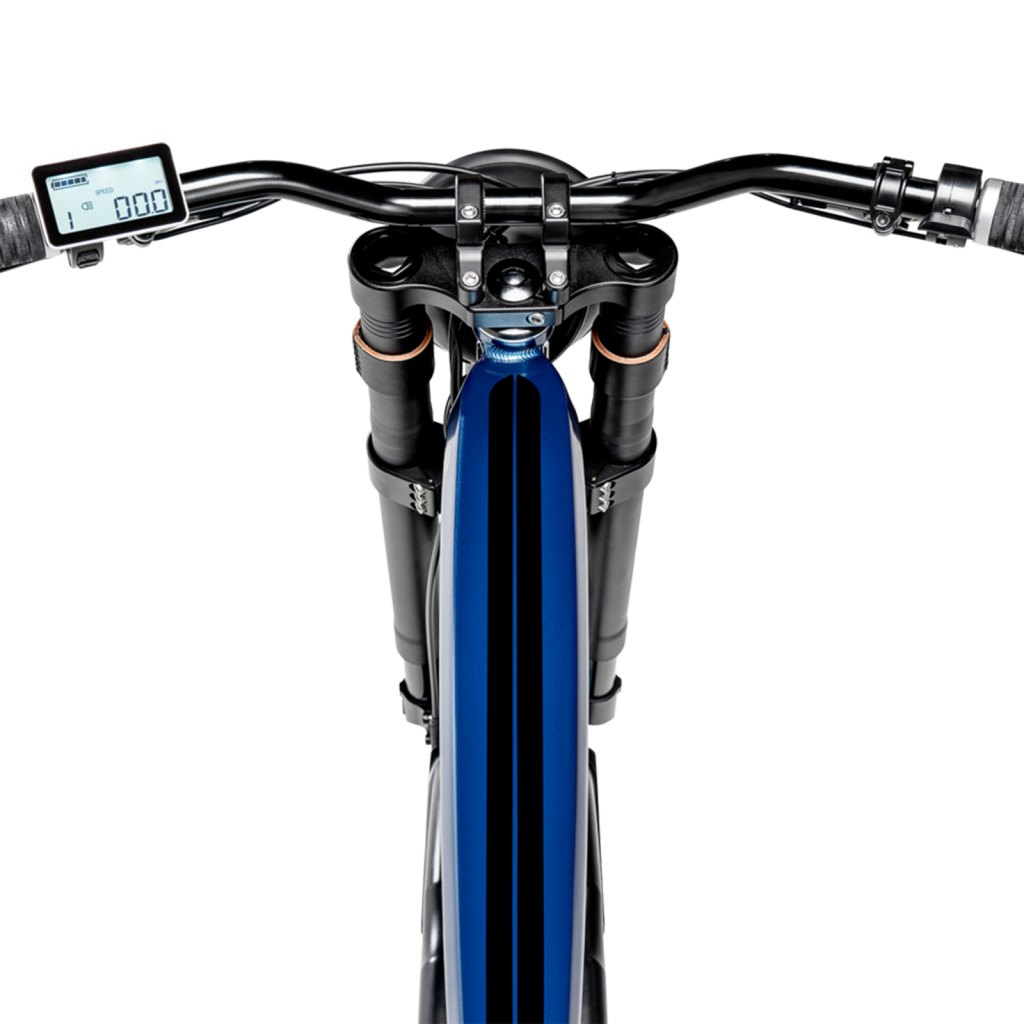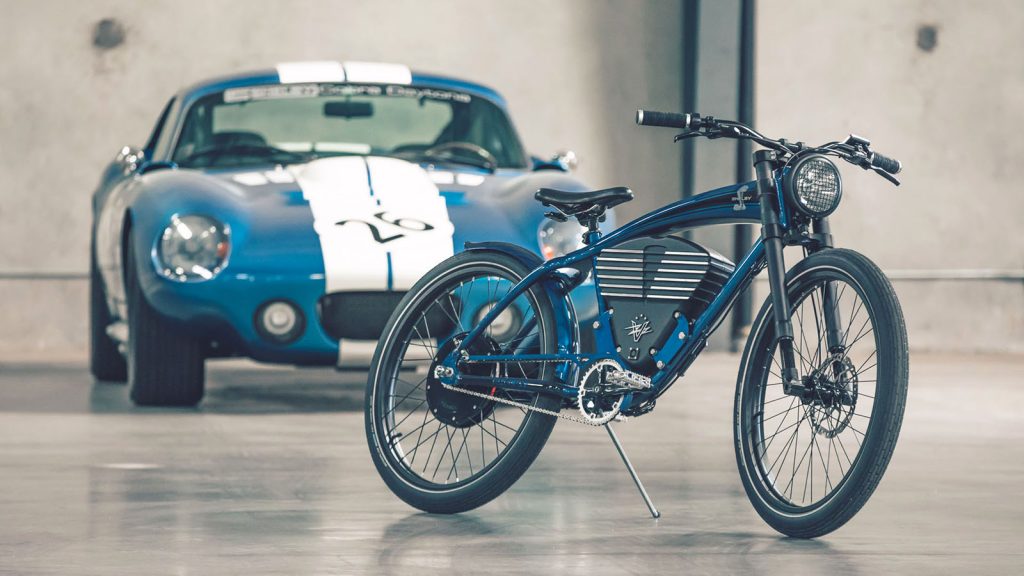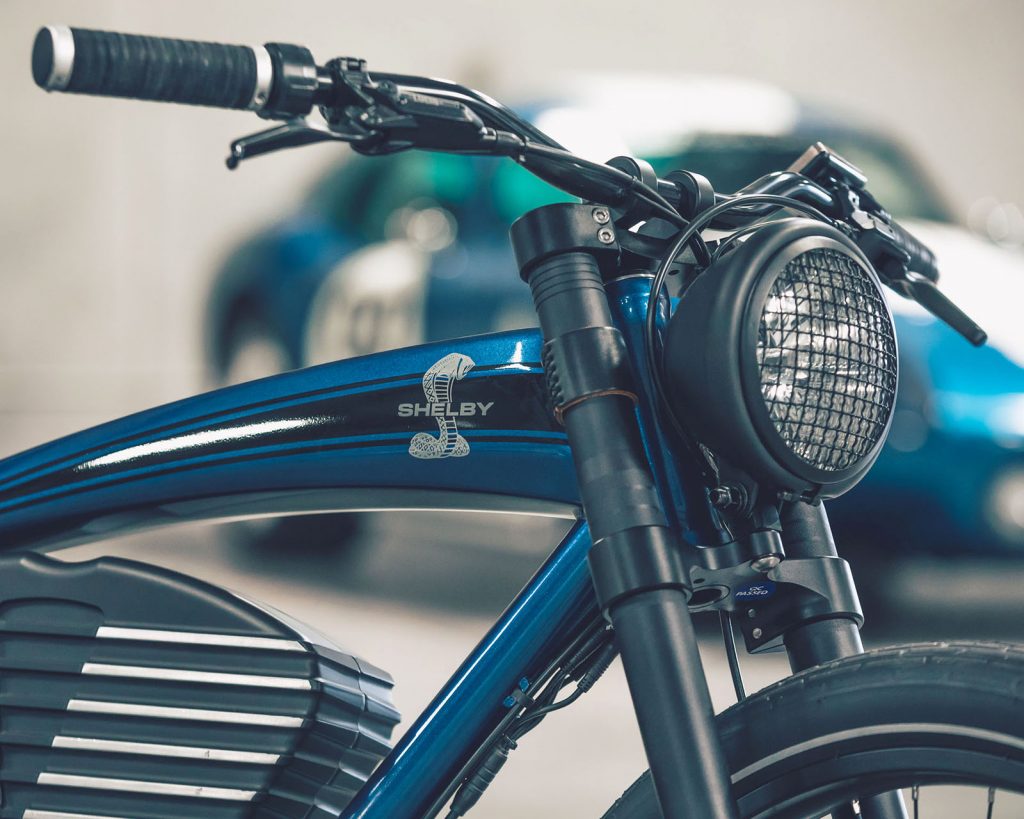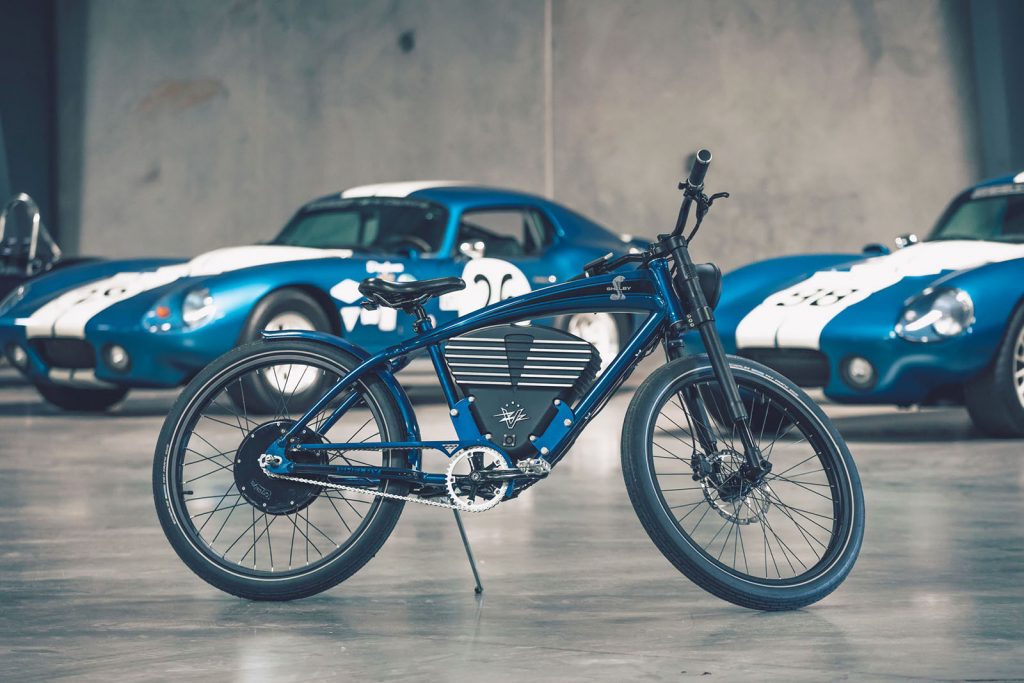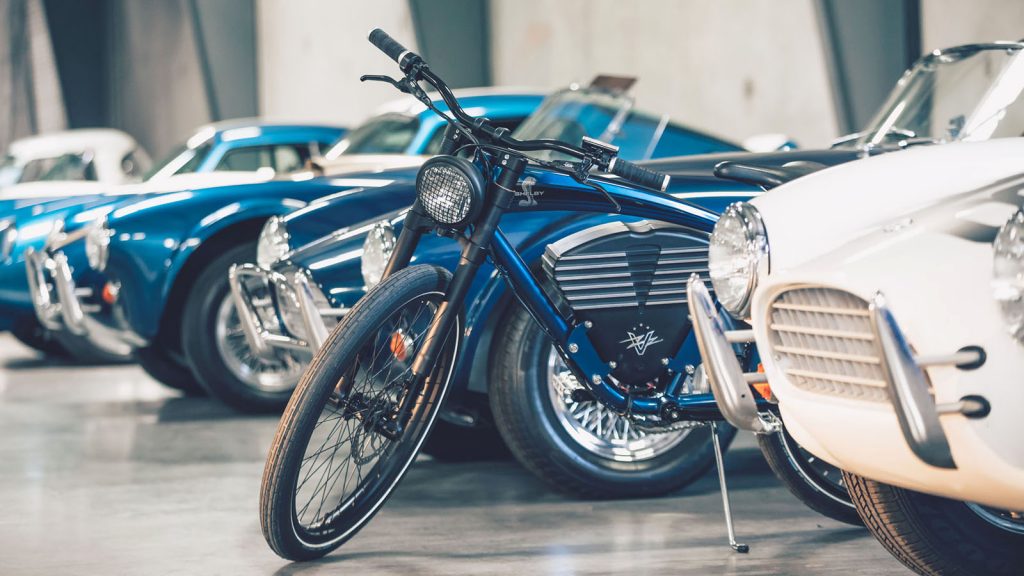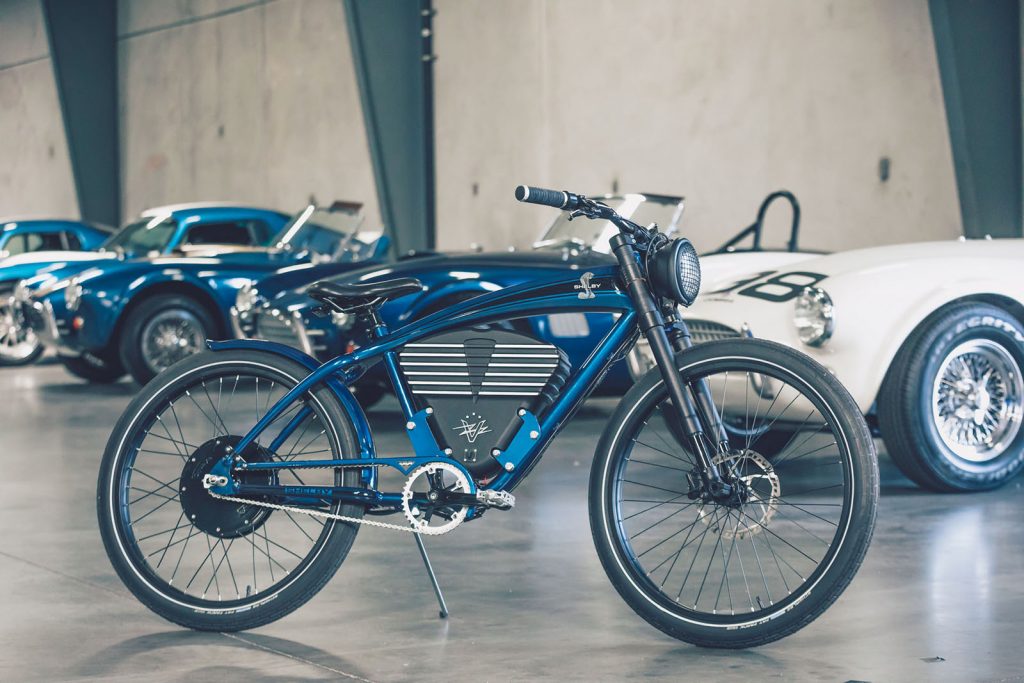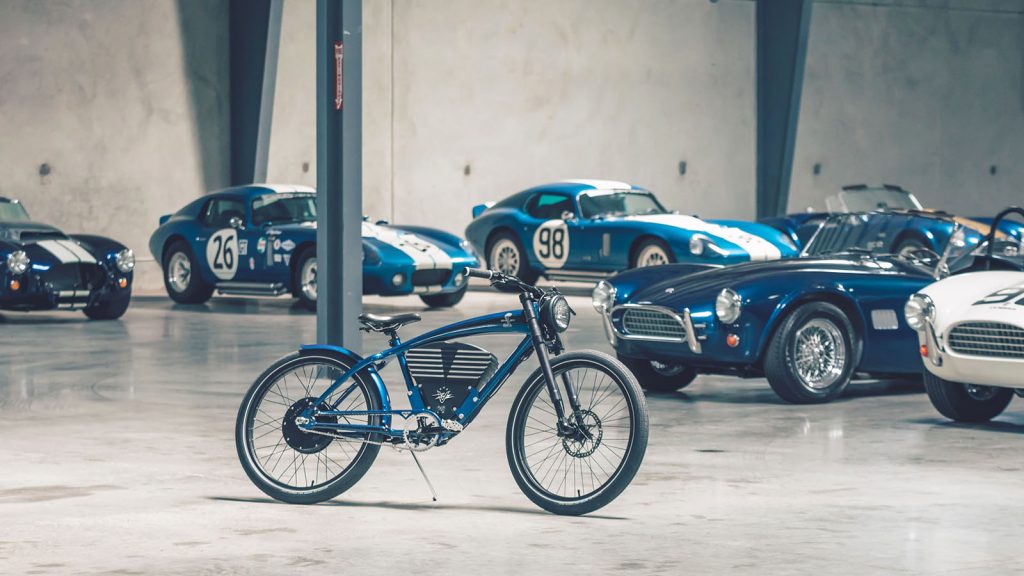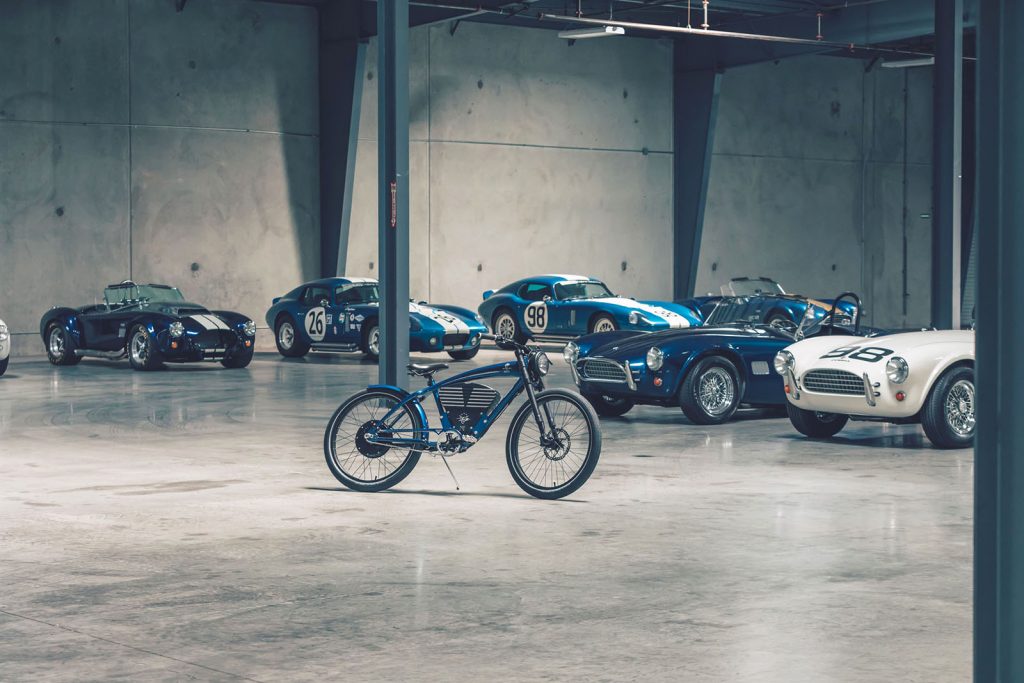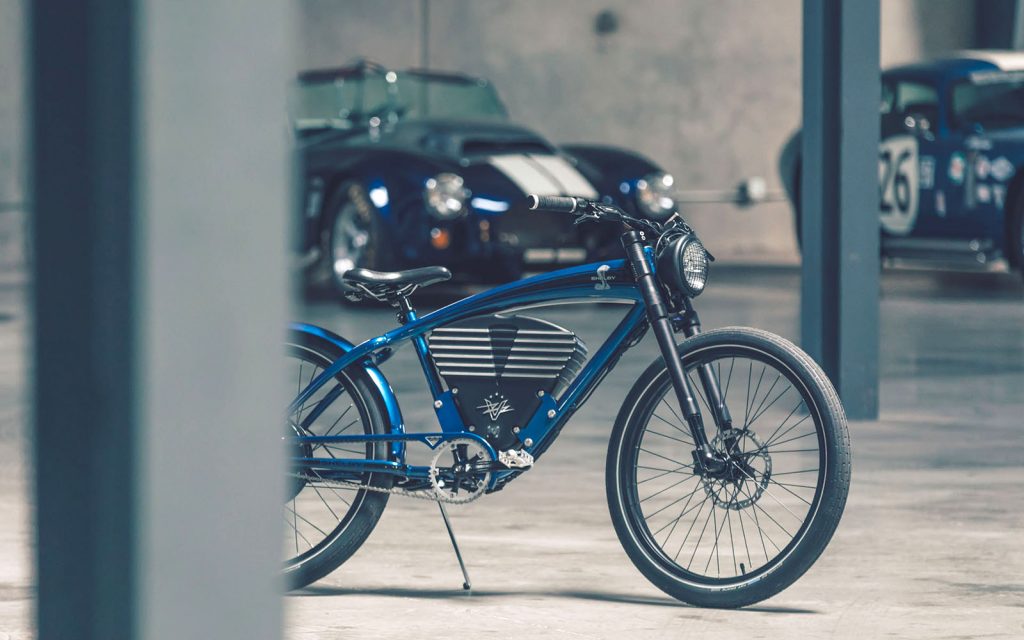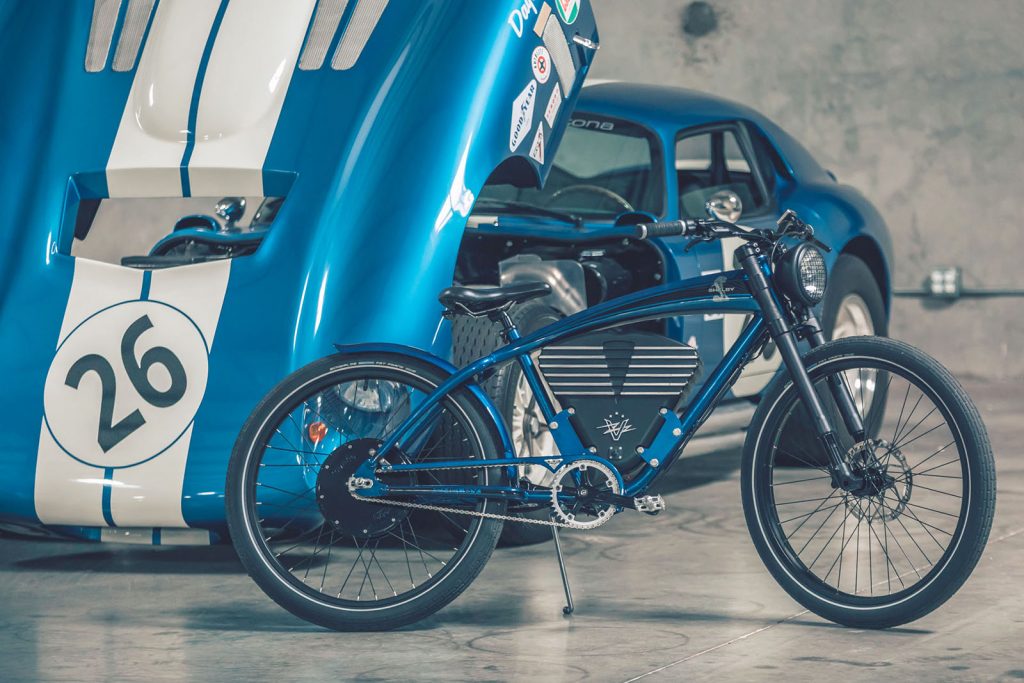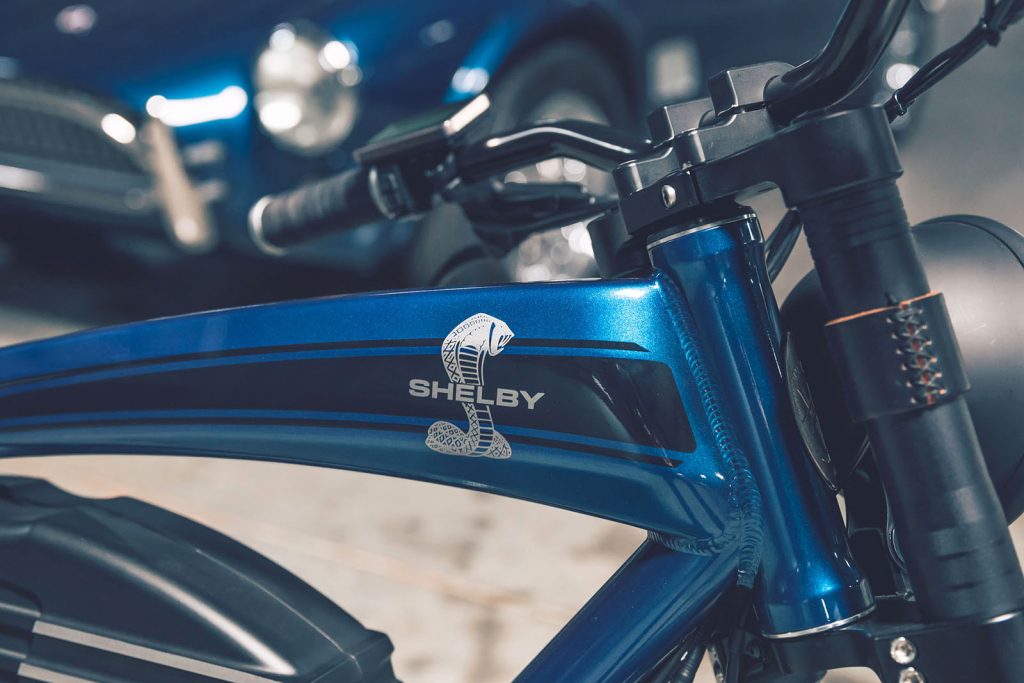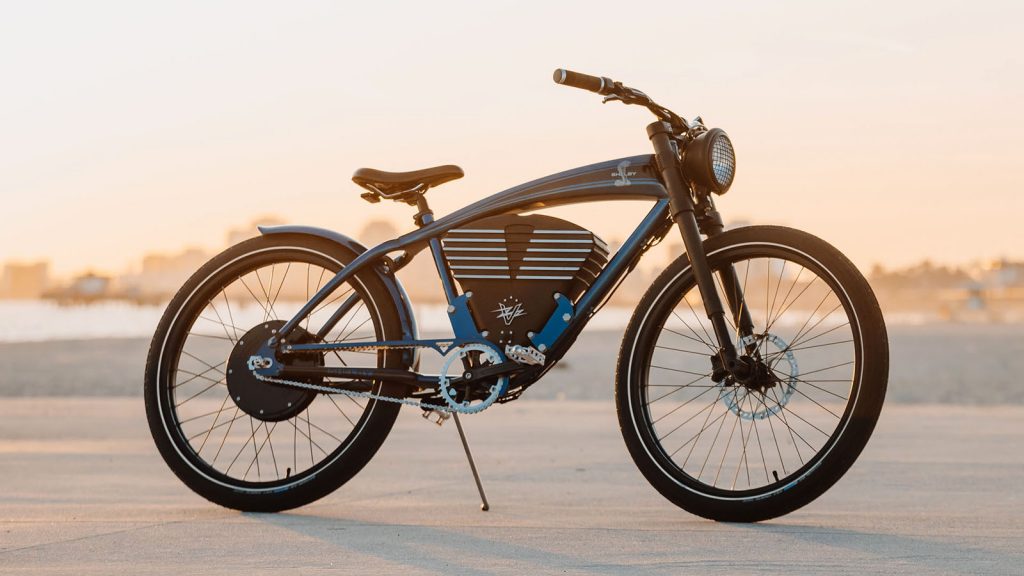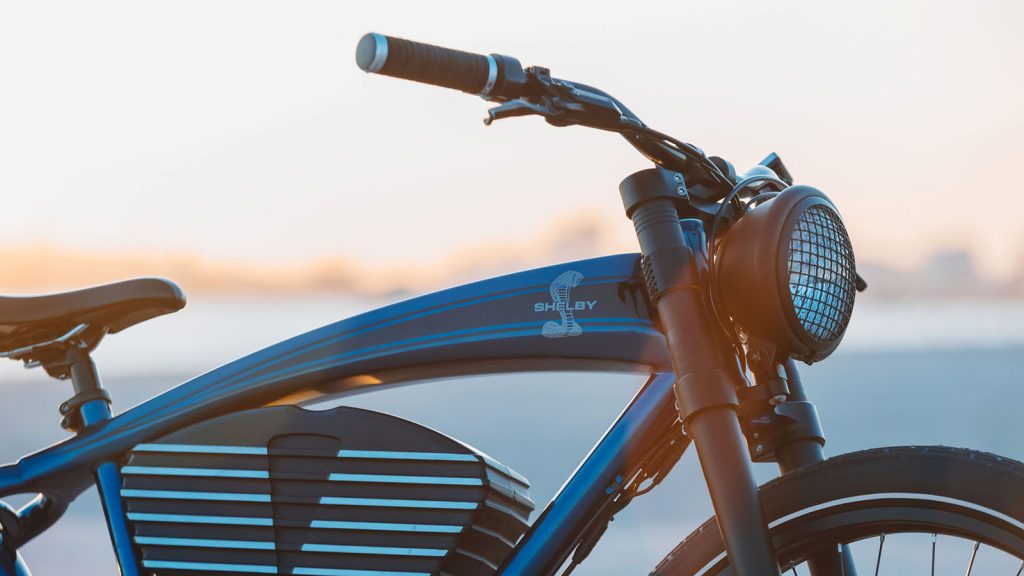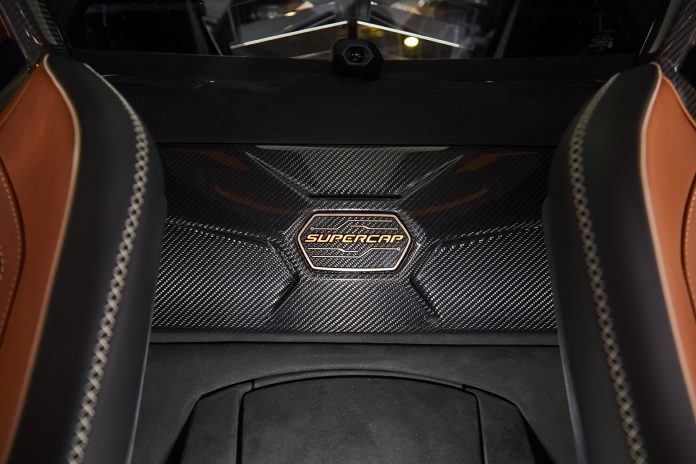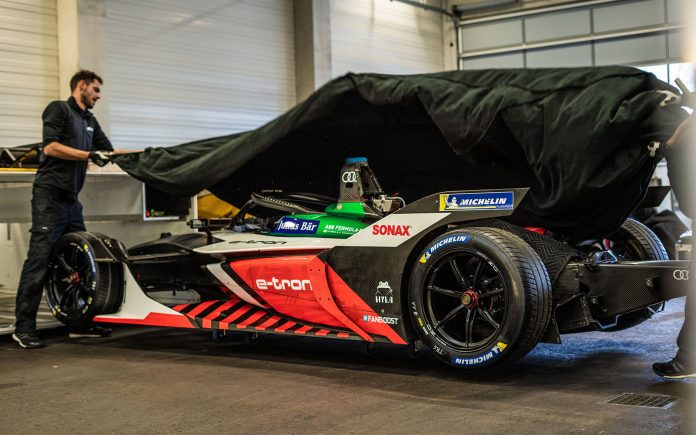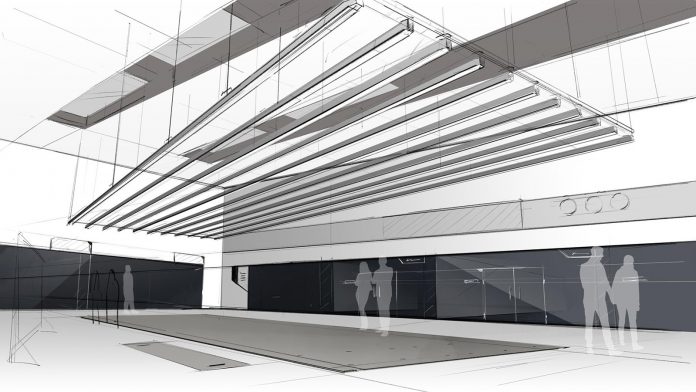- For the first time in 55 years, Ford is expanding the Mustang lineup with the all-electric Mustang Mach-E SUV joining the sports coupe, convertible and special editions, featuring an all-new infotainment system and connected vehicle technology
- Mustang Mach-E embodies the Mustang spirit – from its sleek silhouette and muscular curves to exhilarating drive experiences that offer unique driving dynamics and sounds
- Mustang Mach-E GT Performance Edition brings the thrills Mustang is famous for, targeting 0-60 mph in the mid-3-second range and an estimated 342 kW (459 horsepower) and 830 Nm (612 lb.-ft.) of torque
- Mustang Mach-E instills confidence, targeting an EPA-estimated range of at least 300 miles with the available extended-range battery and rear-wheel drive, offering built-in charging solutions that route customers to nearby public charging stations, recommending where to charge on trips, and providing access to over 12,500 public charge stations in the FordPass charging network
LOS ANGELES, CA – For the first time in 55 years, Ford is expanding the Mustang family, bringing the famous pony into the electric age with Mustang Mach-E, an all-new, all-electric SUV born of the same all-American ideals that inspired the best-selling sports coupe in the world.
Ever since the original Mustang took the world by storm in 1964, it quickly came to represent the best of the American spirit: Freedom, progress, fast performance and a touch of rebellion. Now, Mustang is ready to reimagine these ideas for a powerful electric future, with space for customers’ growing needs and advanced over-the-air updates that continue to improve the vehicle.
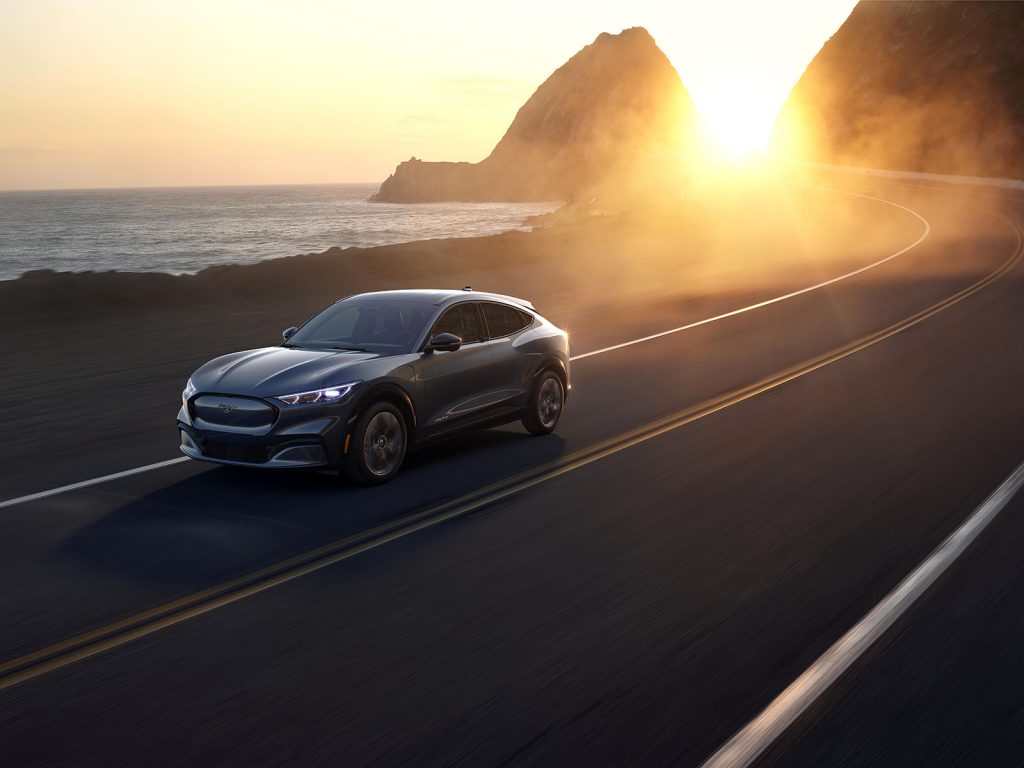
“At the first-ever Detroit auto show, Henry Ford said he was working on something that would strike like forked lightning,” said Bill Ford, executive chairman, Ford Motor Company. “That was the Model T. Today, the Ford Motor Company is proud to unveil a car that strikes like forked lightning all over again. The all-new, all-electric Mustang Mach-E. It’s fast. It’s fun. It’s freedom. For a new generation of Mustang owners.”
Developed in a century-old brick building a few blocks away from Henry Ford’s first factory in Detroit, Ford brought the Mustang Mach-E to life through a development process concentrated entirely on customer needs and desires. The result is a sleek, beautiful SUV that delivers spirited ride and handling, with state-of-the-art connected vehicle technology that makes Mach-E even better over time.
When it arrives in late 2020, Mustang Mach-E will be available with standard and extended-range battery options with either rear-wheel drive or all-wheel drive powered by permanent magnet motors. Equipped with an extended-range battery and rear-wheel drive, Mach-E has a targeted EPA-estimated range of at least 300 miles.1 In extended-range all-wheel-drive configurations, Mach-E is targeting 332 horsepower and 417 lb.-ft. of torque2 – with the standard all-wheel-drive variation targeting quicker times to 60 mph than the base Porsche Macan series.3

Ford also will offer two special performance versions. The GT is targeting 0-60 mph in under 4 seconds2, making it faster off the line than a Porsche Macan Turbo3. The GT Performance Edition, meanwhile, is targeting a comparable 0-60 mph in the mid-3-second range to a Porsche 911 GTS.3 Both GT configurations are targeting an estimated 342 kW (459 horsepower) and 830 Nm (612 lb.-ft.) of torque.2
“The Mustang Mach-E wholeheartedly rejects the notion that electric vehicles are only good at reducing gas consumption,” said Hau Thai-Tang, Ford’s chief product development and purchasing officer. “People want a car that’s thrilling to drive, that looks gorgeous and that can easily adapt to their lifestyle – and the Mustang Mach-E delivers all of this in unmatched style.”
Customers can now visit the Mustang Mach-E reservation site to make a $500 reservation deposit.4 A limited First Edition will be available in extended-range all-wheel drive, with red painted brake calipers, metallic pedal covers, contrasting seat stitching and a scuff plate marked First Edition. Those looking for the thrill of the Mach-E GT can make reservations now for deliveries starting in spring 2021.
In addition to blistering acceleration, Mustang Mach-E will be available with Brembo’s all-new performance Flexira aluminum calipers, which maintain the functionality of a fixed caliper while being designed with the dimensions of a floating caliper. The GT Performance Edition is equipped with a MagneRide® damping system, adaptive suspension technology that lets drivers hug the road while delivering an exciting, comfortable ride.
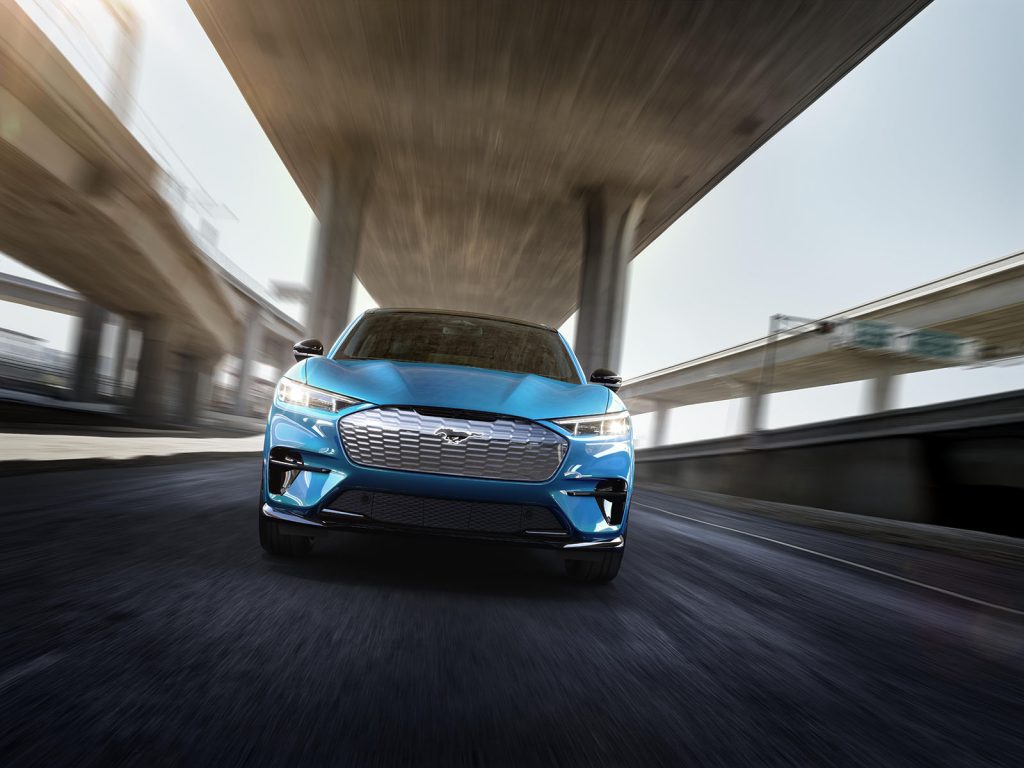
Performance gives new meaning to the word ‘electrifying’
Mustang Mach-E delivers three unique drive experiences – Whisper, Engage and Unbridled – each offering finely tuned driving dynamics packaged with a distinct sensory experience. Features include custom-designed vehicle responsiveness such as sportier steering controls, ambient lighting, sounds tuned for an authentic all-electric experience, and dynamic cluster animations that are tied to driving behavior.
When the vehicle launches, a new Mach-E 4 all-wheel drive system will be available that can apply torque independently to the front and rear axles to deliver impressive acceleration and improved handling over the rear-wheel drive model. Ford tuned this system to provide excellent traction on the road, rigorously testing the vehicle in wet and snowy terrain to help control for slippery conditions. Mach-E is the first production vehicle to be tuned by the Ford Performance team utilizing Ford’s racing simulator in North Carolina.
“Whether you want to really feel its performance capability or are looking for the quiet atmosphere that electric vehicles can offer, the Mach-E harnesses the power of electrification to create a unique driving experience while retaining that unmistakable Mustang feeling of freedom,” said Ted Cannis, Ford enterprise product line director, global electrification.
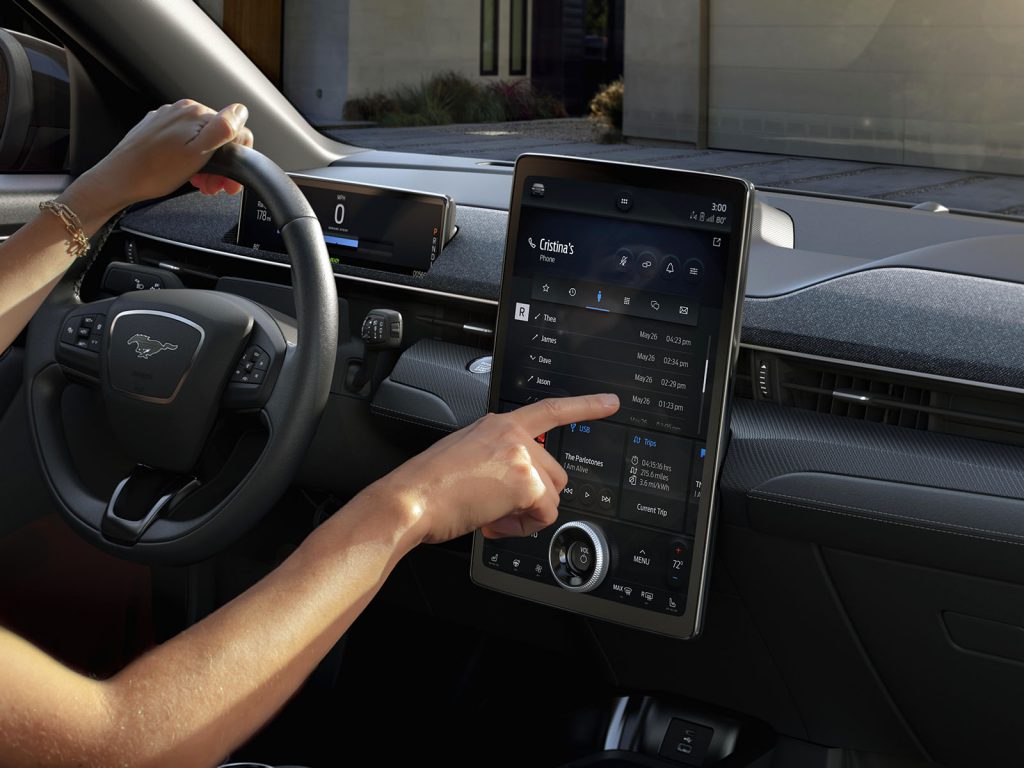
Seamless technology that easily adapts to your lifestyle
Making its debut in the Mach-E is the next-generation SYNC® communications and entertainment system, a sleek and modern interface that uses machine learning to quickly learn drivers’ preferences, and gets even better over time thanks to advanced over-the-air updates. Next-generation SYNC’s 15.5-inch screen and simple interface ditches complicated menus, making it easier to access features with touch, swipe and pinch controls that every smartphone owner will be comfortable using.
“Next-generation SYNC actively starts adapting to you as soon as you start using it, quickly learning your preferences and making personalized suggestions,” said Darren Palmer, Ford global director for battery electric vehicles. “It can suggest going to the gym if it learns Mondays are workout days or calling home if you do that every day after work. The result is a cloud-connected assistant and interface that’s intuitive, beautiful and ready for the future thanks to fast over-the-air updates.”
As next-generation SYNC evolves to serve customers better over time, Ford has outfitted the Mach-E with the ability to continuously improve through the delivery of secure over-the-air updates that are capable of enhancing vehicle performance, offering maintenance updates and even adding entirely new features.
A new way to look at – and to experience – Mustang
Using Ford’s new all-electric architecture that places batteries inside the underbody, Ford engineers and designers were able to create a vehicle that’s not only true to Mustang but also maximizes SUV space for five passengers and cargo.
“Thanks to advances in battery technology, the Mustang Mach-E is the kind of car that gets people excited about driving, with a sporty, beautiful silhouette that delivers an incredible shape rarely seen in SUVs,” said Ron Heiser, Ford Mustang Mach-E chief program engineer.
The Mach-E is instantly recognizable as a Mustang, thanks to signature elements such as its long, powerful hood, rear haunch design, aggressive headlights and trademark tri-bar taillamps. Clever design and engineering delivers surprising rear seat roominess and ample cargo space.
Along with its all-new propulsion system, the Mach-E holds another surprise under its hood – a drainable front trunk storage unit. Providing 4.8 cubic feet of storage space, the front trunk is large enough to comfortably store the equivalent of a carryon luggage bag. And because it’s drainable, customers can easily pack it full of ice and keep their favorite beverages cold – perfect for that pre-game tailgate or trip to the beach.
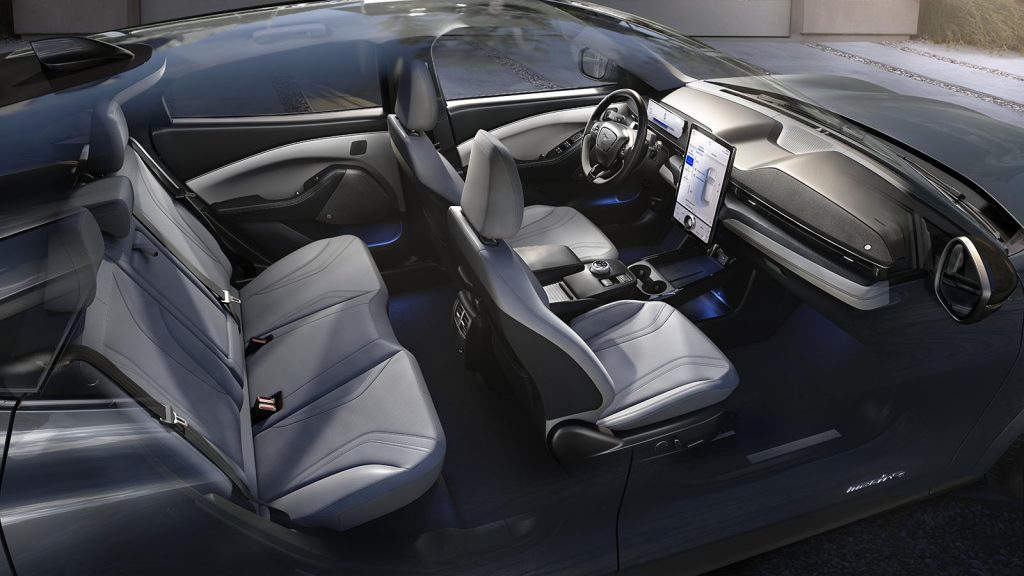
Inside the Mach-E: A floating world makes you feel light and in command
To truly take advantage of the extra space provided by electrification, Ford designers worked extensively with customers to understand how they would prefer to use the interior of their vehicles. Designed with SUV-size proportions to seat five adults comfortably, the Mach-E leaves plenty of space for friends, kids and cargo.
In addition to the exterior front trunk, the rear trunk offers 29 cubic feet of space. With the rear seats down, the Mach-E boasts 59.6 cubic feet of space – more than enough room for luggage, camping gear or whatever else you may want to move around.5
Everywhere inside, the Mach-E represents a fusion of sleek, modern design and smart functionality. Premium available Bang & Olufsen speakers are seamlessly integrated across the front, floating above the air vents like a sound bar. A floating flip-up armrest doubles as a place to store purses or bags.
Traditional Mustang design cues like the double-cowl instrument panel round out the interior.
Even the available panoramic fixed-glass roof has a secret – a special glass coating with infrared protection helps the interior stay cooler in the summer and warmer in the winter. In addition, an inner layer between the glass helps protect against UV rays.
Finally, getting in and starting the vehicle is easy and effortless with Phone As A Key technology6, which makes its debut in the Ford brand lineup in Mustang Mach-E. Using Bluetooth, the vehicle can detect customers’ smartphones as they approach, unlocking the Mach-E and allowing them to start driving without getting their phones out of their pockets or using a key fob. A backup code can be entered on the center touch screen to start and drive the vehicle in the event a phone battery dies.
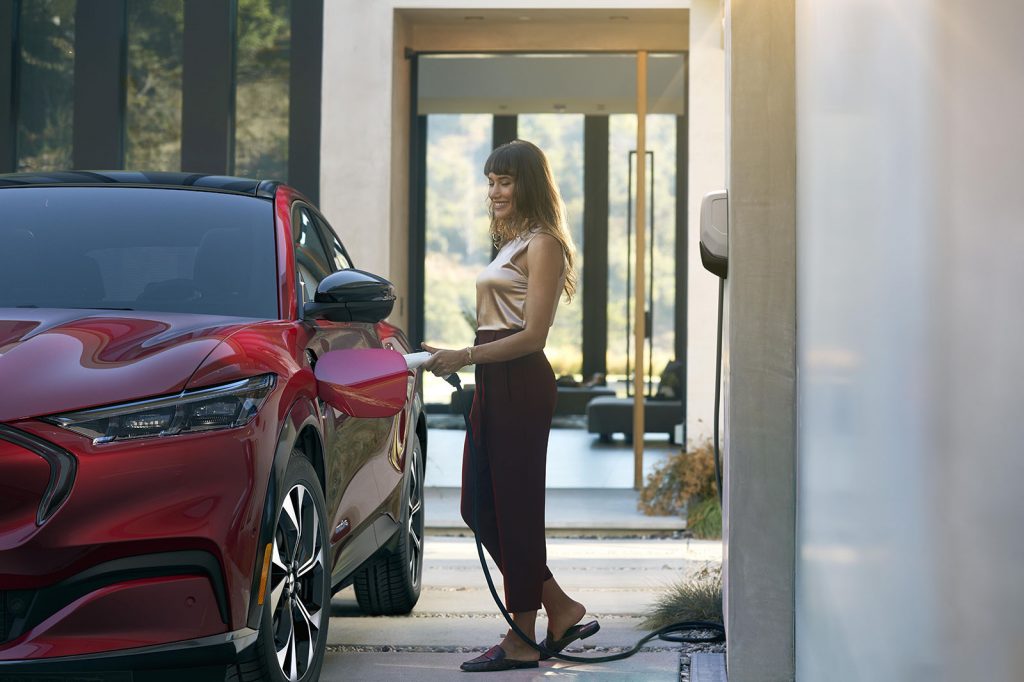
Battery technology keeps you running with hassle-free charging solutions
Mustang Mach-E will be available in both standard-range (75.7 kWh lithium-ion battery) and extended-range (98.8 kWh battery), which has a targeted EPA-estimated range of at least 300 miles in rear-wheel-drive configuration.1 These advanced batteries feature 288 lithium-ion cells in the standard-range version and 376 lithium-ion cells in the extended-range. Designed for ease of manufacturing, the battery is located on the floor between the vehicle’s two axles – and tested at temperatures as extreme as minus 40 degrees Fahrenheit. The batteries are secured inside a waterproof battery case surrounded by crash-absorption protection. They are liquid-cooled to optimize performance in extreme weather and to improve charging times.
As electric vehicle owners do 80 percent of their charging at home, Ford offers a Ford Connected Charging station that can add an estimated average range of 32 miles per charging hour on a 240V outlet, based on extended-range, rear-wheel-drive configuration.7 The Ford mobile charger, included with the vehicle, can add an estimated average range of 22 miles per charging hour on a 240V outlet,7 the same used for a conventional oven. Ford is teaming up with Amazon Home to facilitate easy customer home installation by a licensed electrician.
The connected navigation system will identify up-to-date public charging locations during trips and prompt owners to charge at the most convenient points on each drive – all to help ensure they don’t have to be anxious about how much range they have.7
Ford also makes charging at home or on the go hassle-free by providing multiple home charging solutions and by giving customers access to the FordPass Charging Network – the largest public charging network in the country with more than 12,500 charging stations (and more than 35,000 charge plugs) and growing, including DC fast chargers.8 With peak charging rate of 150 kW, the Mustang Mach-E with an extended battery and rear-wheel drive can add an estimated average of 47 miles of range in approximately 10 minutes while charging on a DC fast charging station.⁷ The standard-range Mustang Mach-E is estimated to charge from 10 percent to 80 percent in approximately 38 minutes while charging on a DC fast charging station.⁹
Ford has more than 2,100 EV-certified Ford dealers and more than 3,500 EV-trained technicians to support customers nationwide.
# # #
¹Based on full charge. Actual range varies with conditions such as external elements, driving behaviors, vehicle maintenance and lithium-ion battery age. Final EPA-estimated ratings available in the 2020 calendar year.
2Based on manufacturer calculation using computer engineering simulations. Your results may vary.
3Targeted performance based on manufacturer calculation using computer engineering simulations versus Porshe.com data. Your results may vary.
⁴Deposit only allows configuration of a vehicle. Reservation process is not an order or purchase of vehicle. Deposit does not guarantee delivery of a vehicle.
5Cargo and load capacity limited by weight and weight distribution.
6Requires feature activation.
7Range and charge time based on manufacturer computer engineering simulations and EPA-estimated range calculation methodology. The charging rate decreases as battery reaches full capacity. Individual results may vary based on peak charging times and battery state of charge. Actual vehicle range varies with conditions such as external elements, driving behaviors, vehicle maintenance and lithium-ion battery age.
8Based on original equipment manufacturers (OEM)/automotive manufacturers that sell all-electric vehicles and have publicly announced charging networks. Department of Energy data used. FordPass, compatible with select smartphone platforms, is available via a download. Message and data rates may apply.
⁹Charge time based on manufacturer computer engineering simulations. The charging rate decreases as battery reaches full capacity. Your results may vary based on peak charging times and battery state of charge.
BANG & OLUFSEN© 2019 and B&O© 2019. BANG & OLUFSEN™ and B&O™ are registered trademarks of Bang & Olufsen Group. Licensed by Harman Becker Automotive Systems Manufacturing Kft. All rights reserved.
About Ford Motor Company
Ford Motor Company is a global company based in Dearborn, Michigan. The company designs, manufactures, markets and services a full line of Ford cars, trucks, SUVs, electrified vehicles and Lincoln luxury vehicles, provides financial services through Ford Motor Credit Company and is pursuing leadership positions in electrification, autonomous vehicles and mobility solutions. Ford employs approximately 191,000 people worldwide. For more information regarding Ford, its products and Ford Motor Credit Company, please visit corporate.ford.com.
